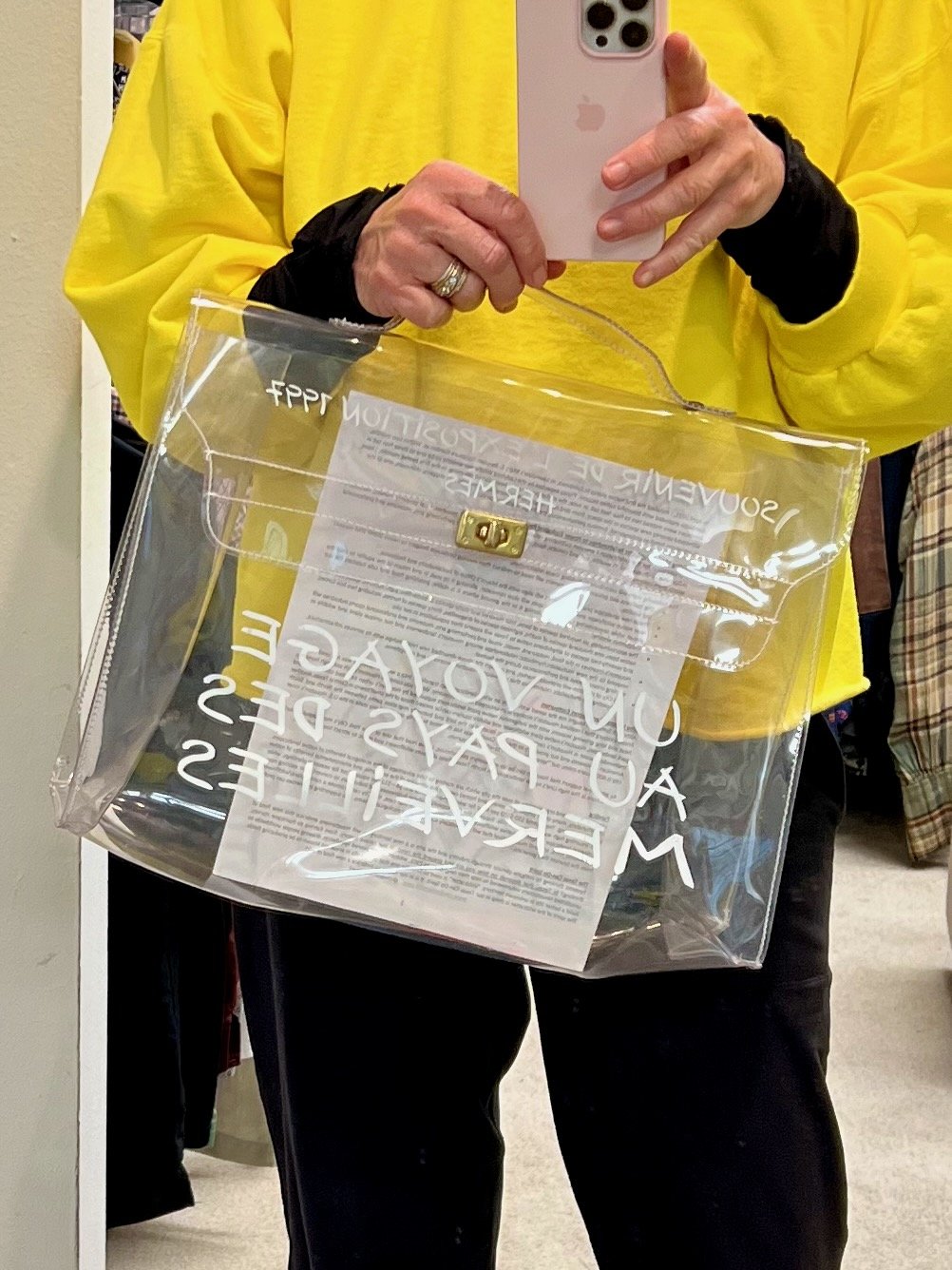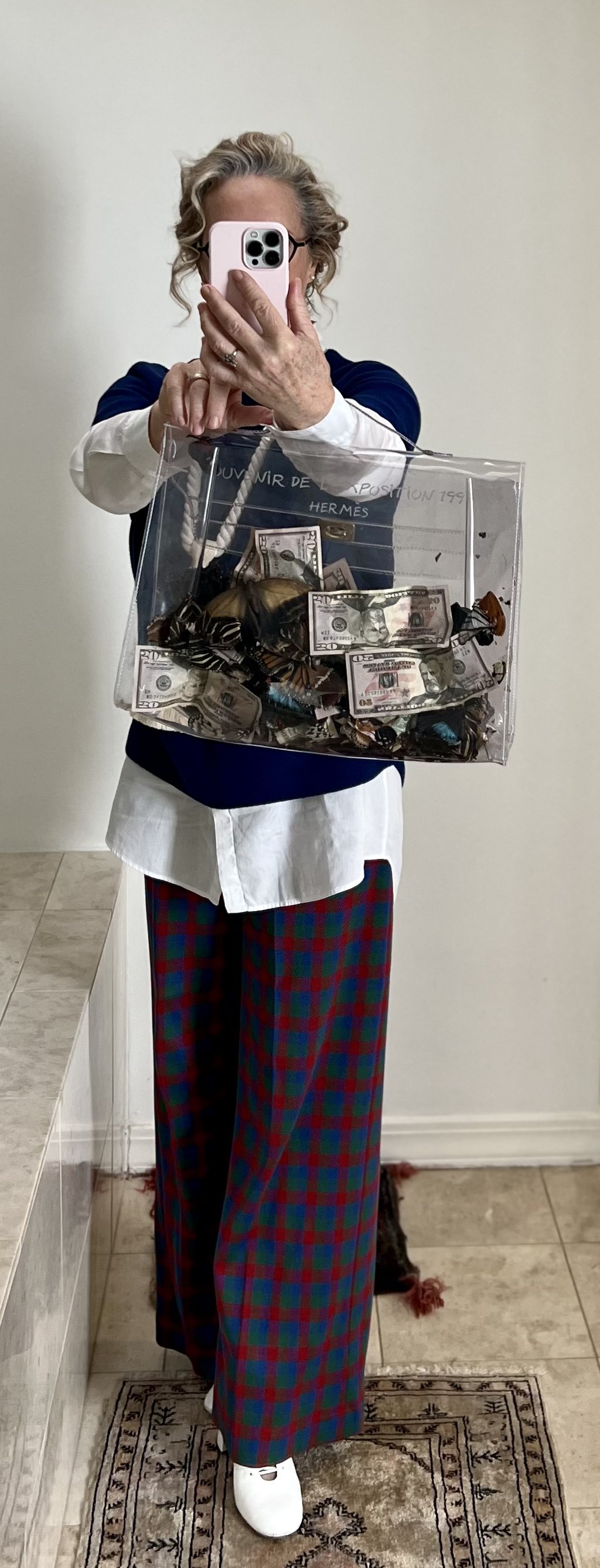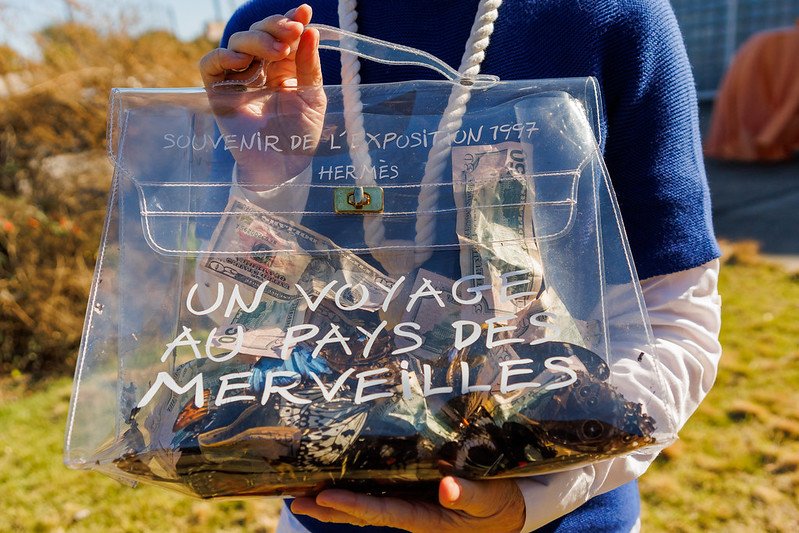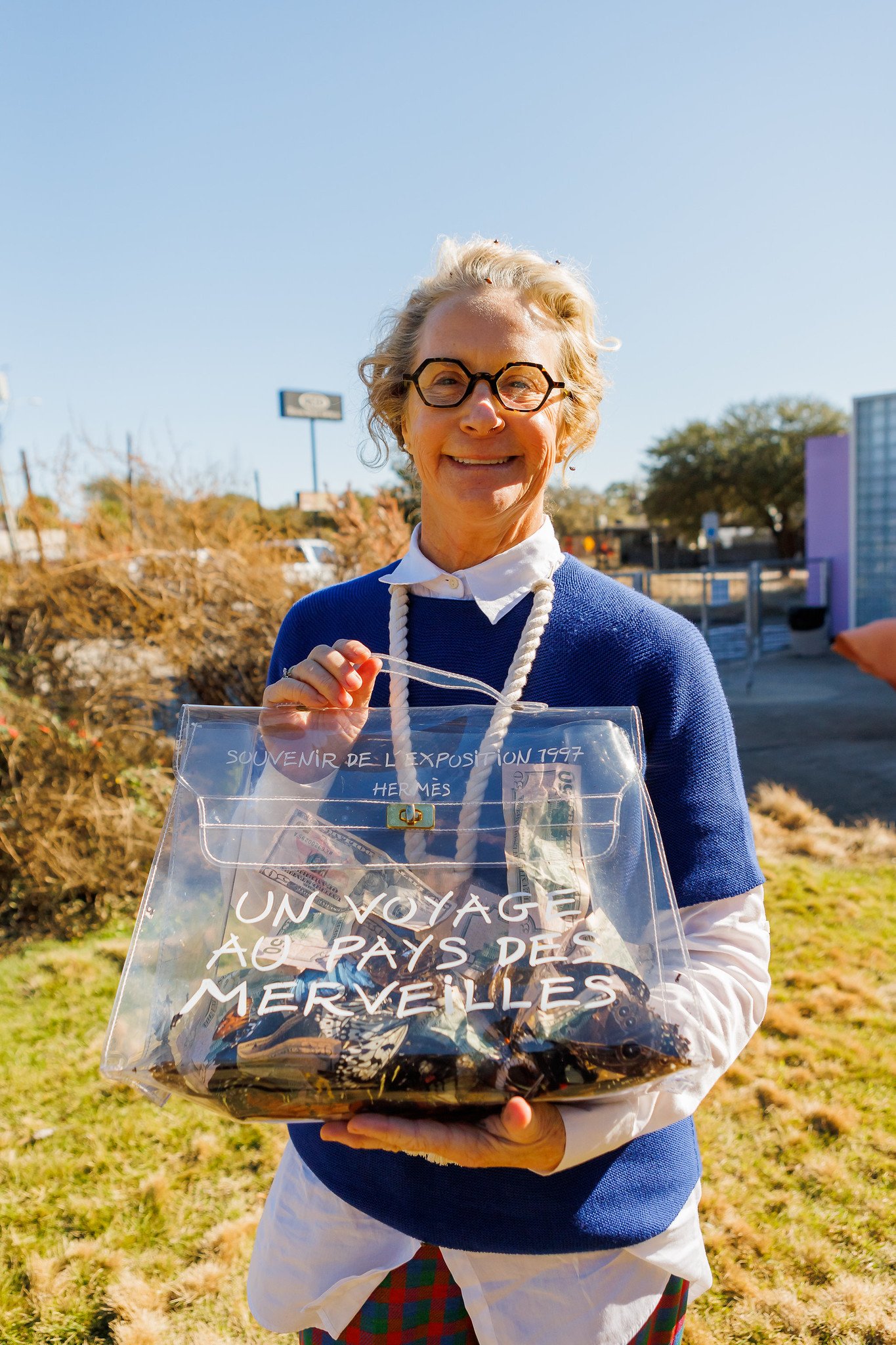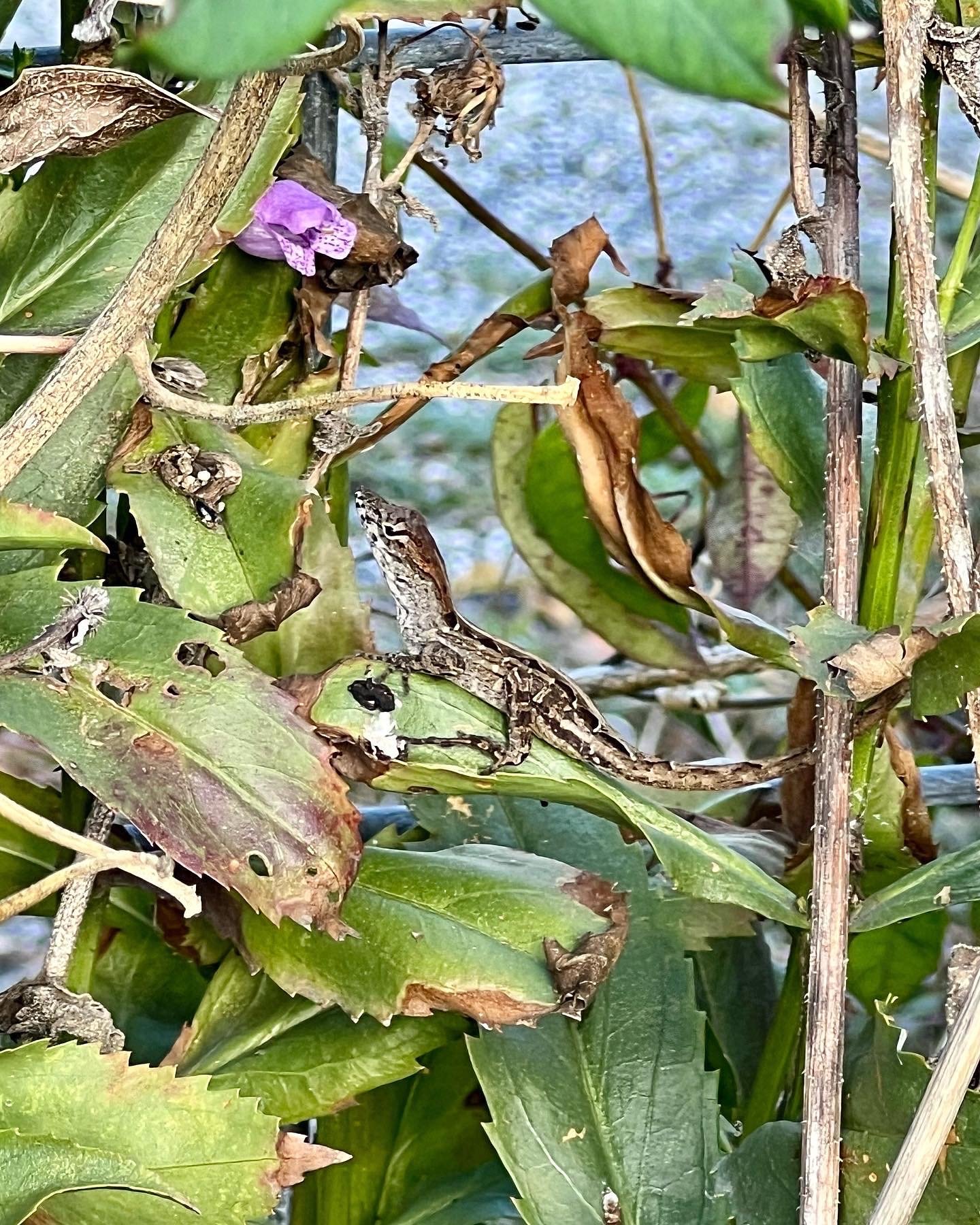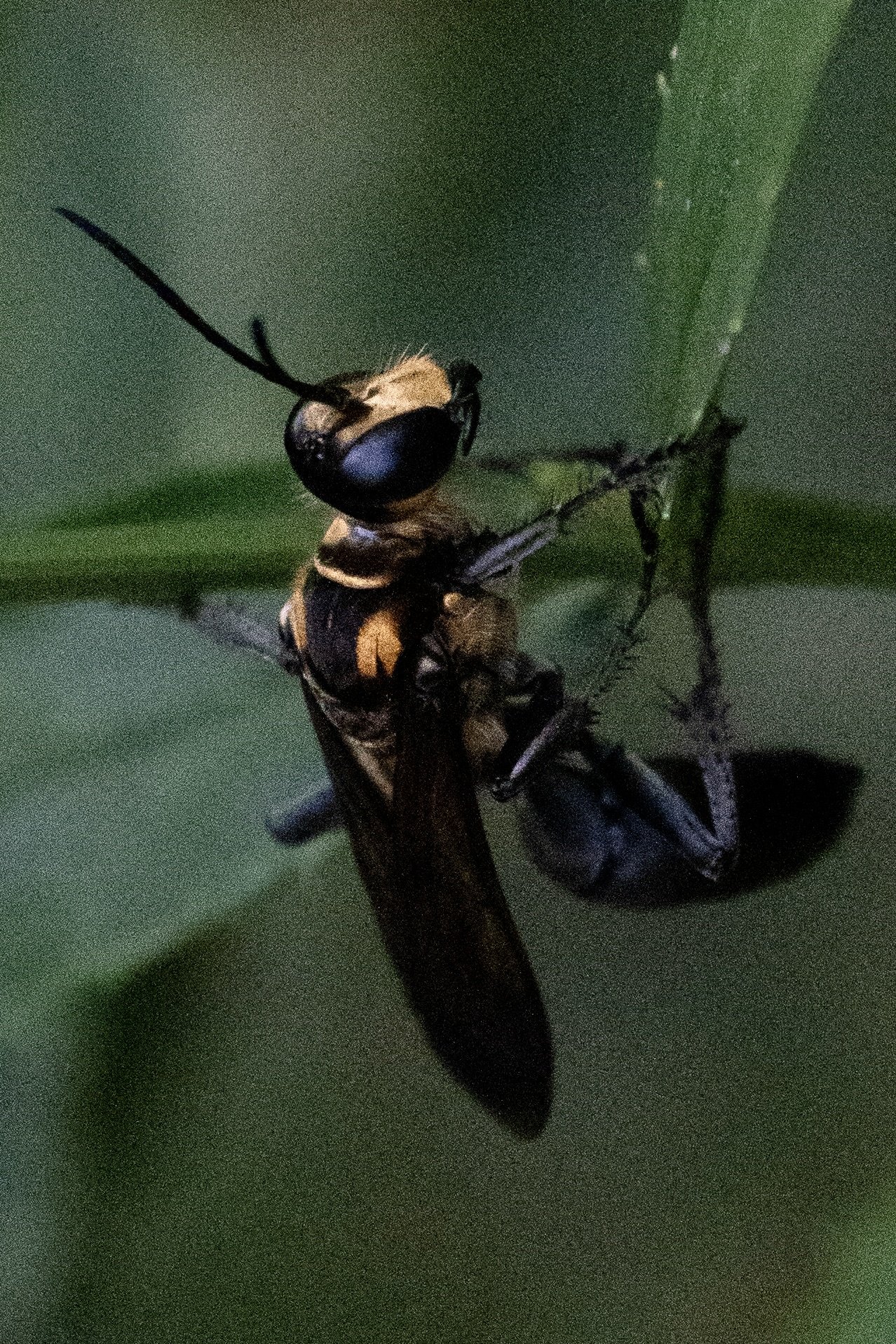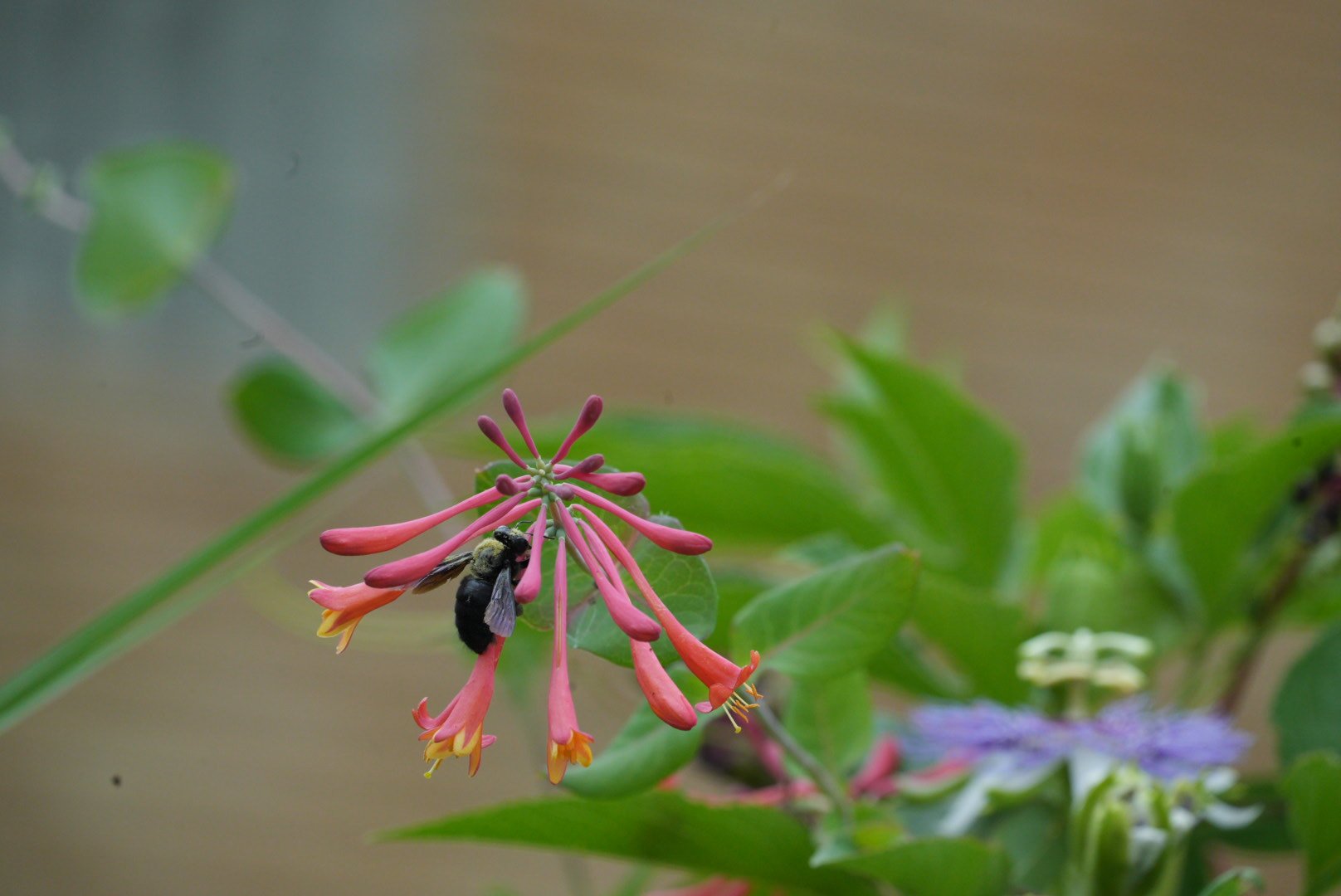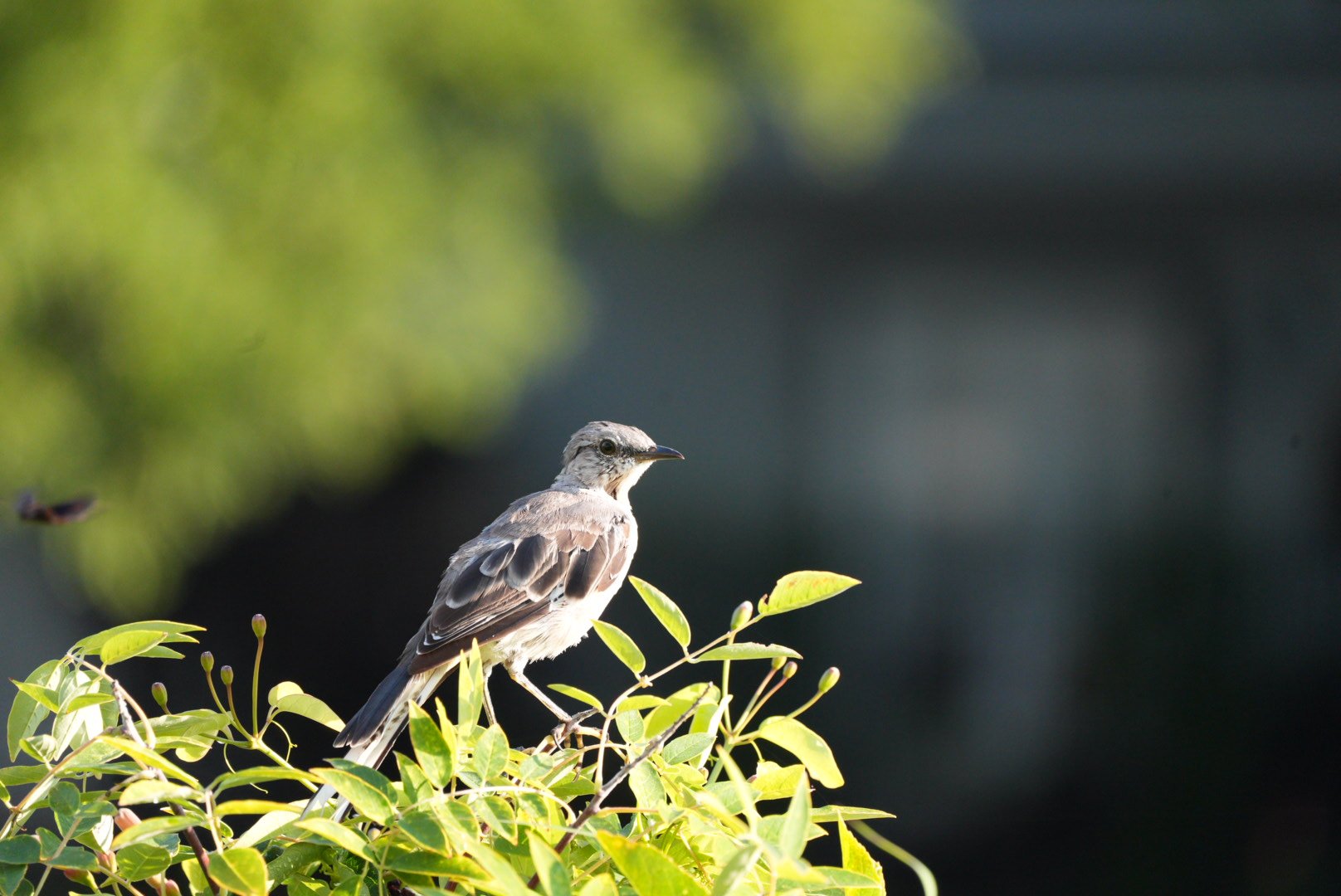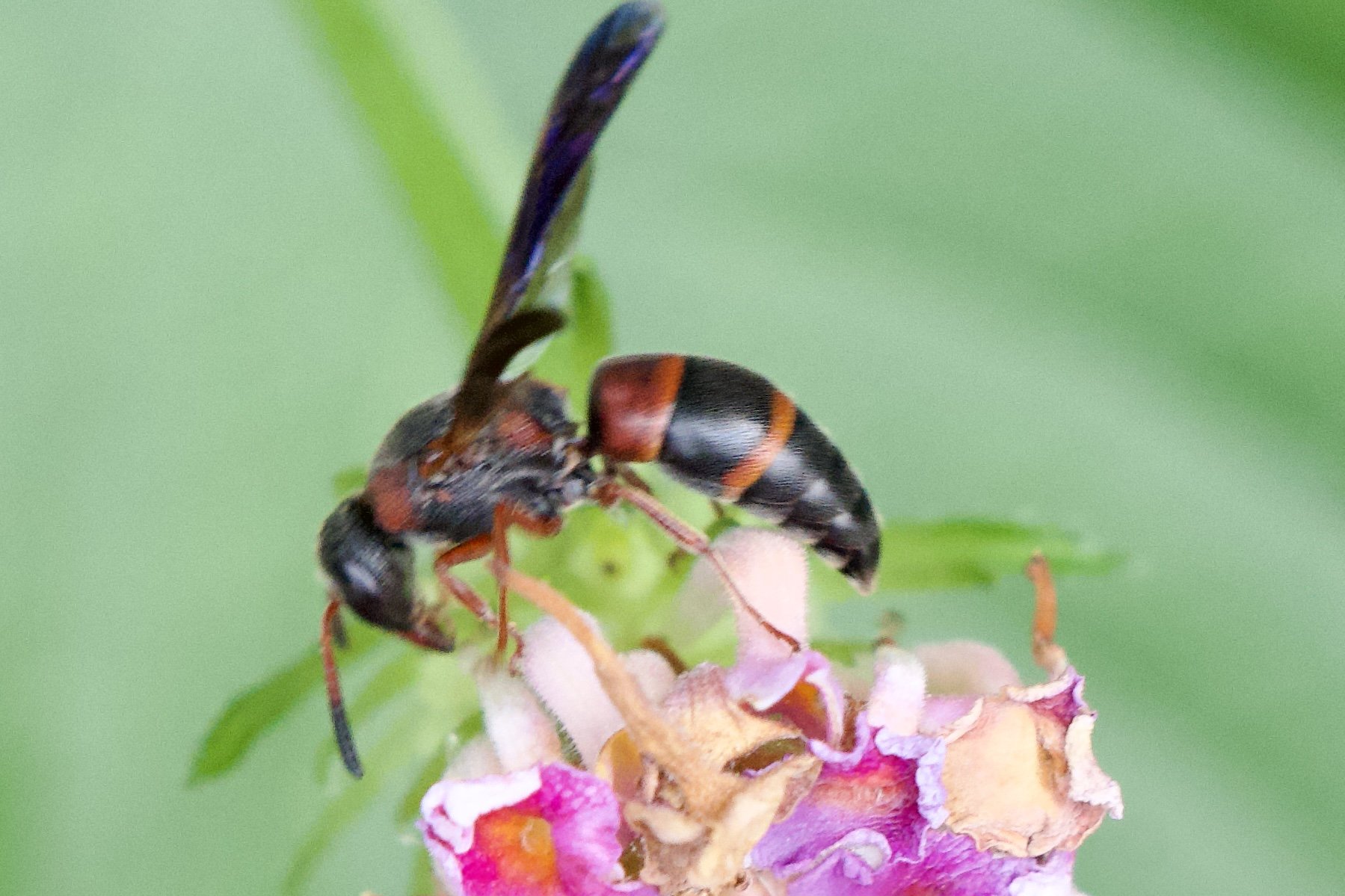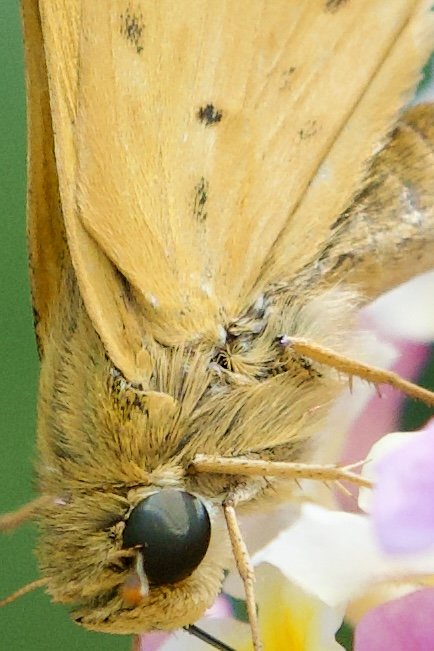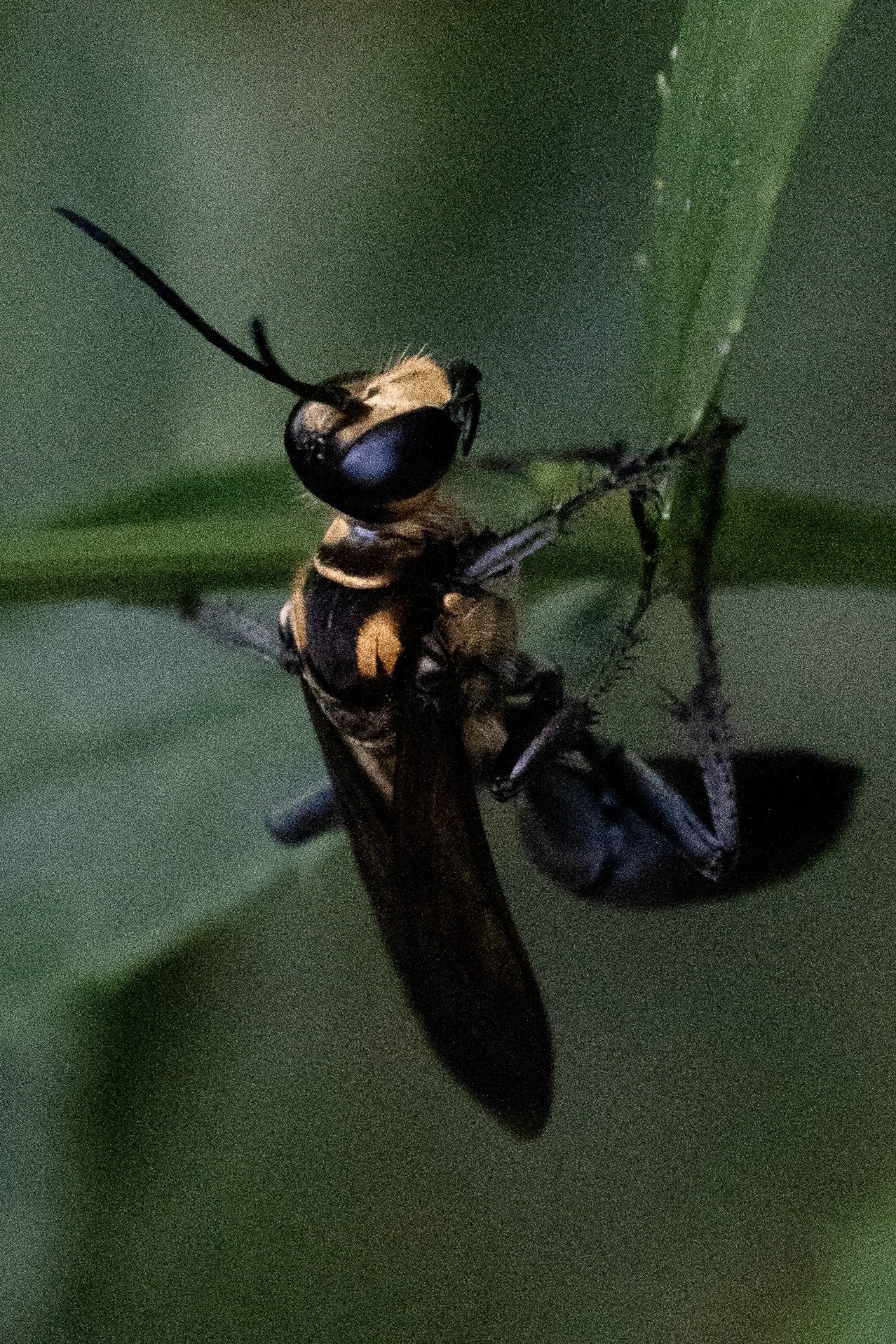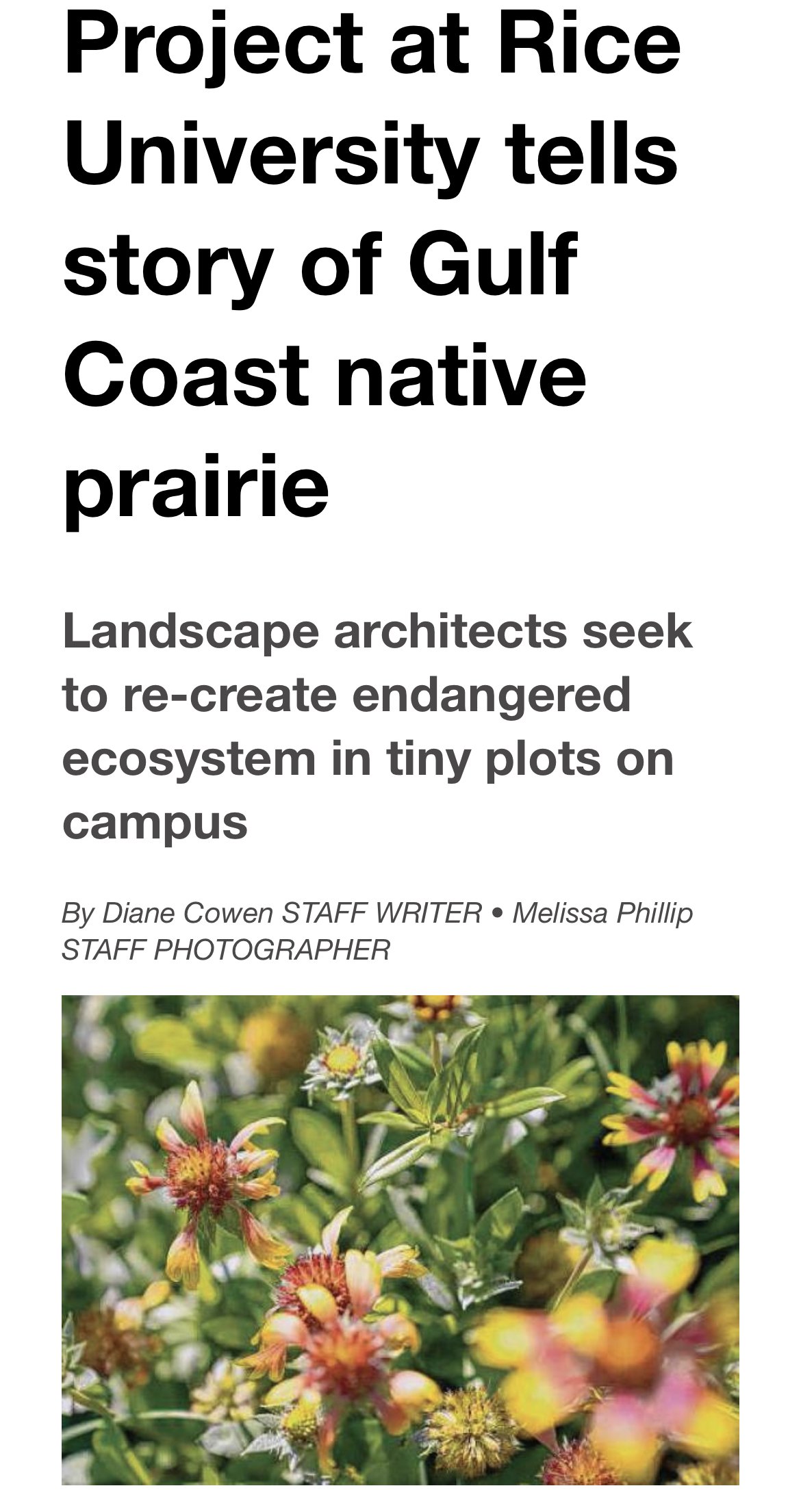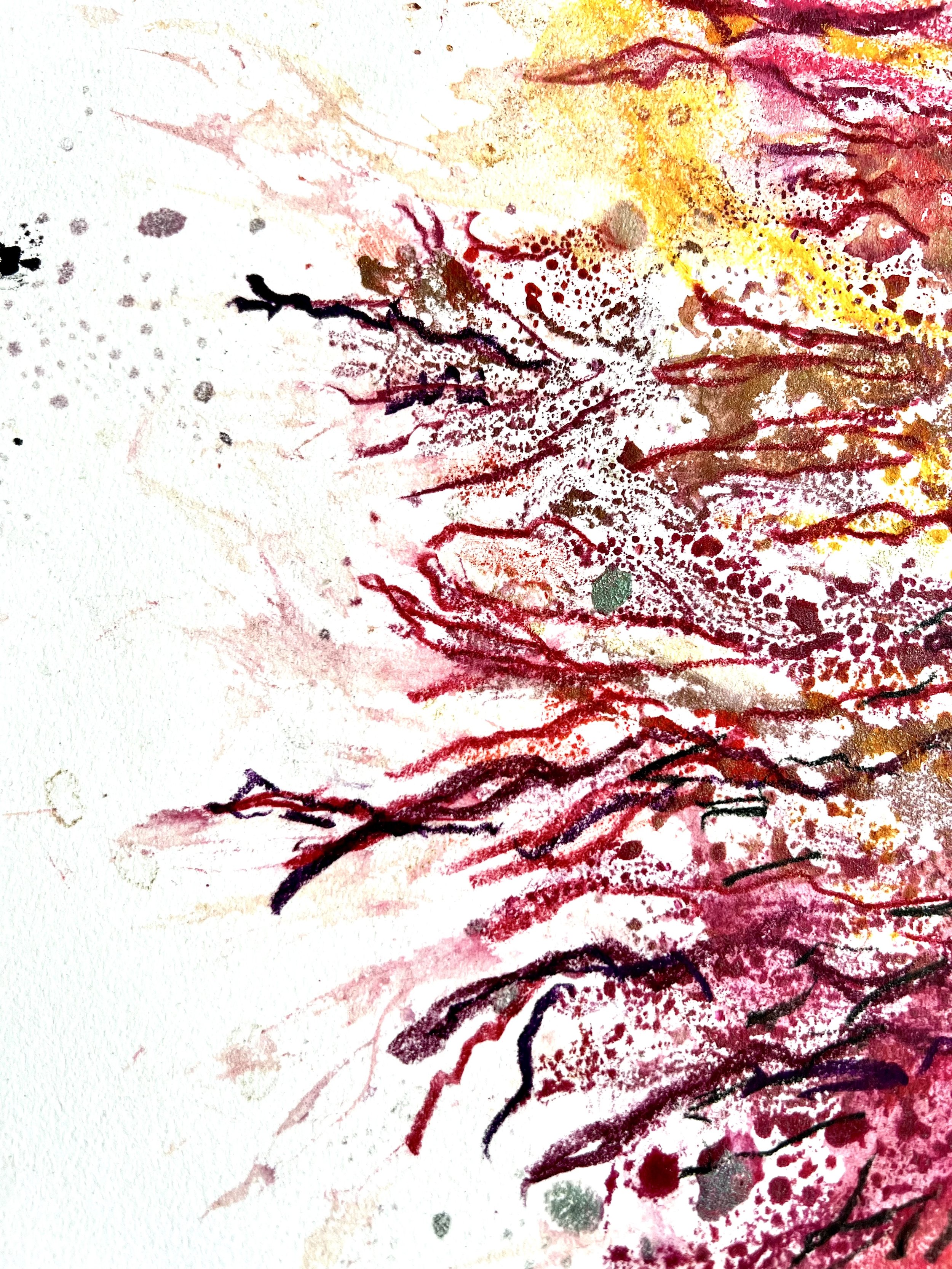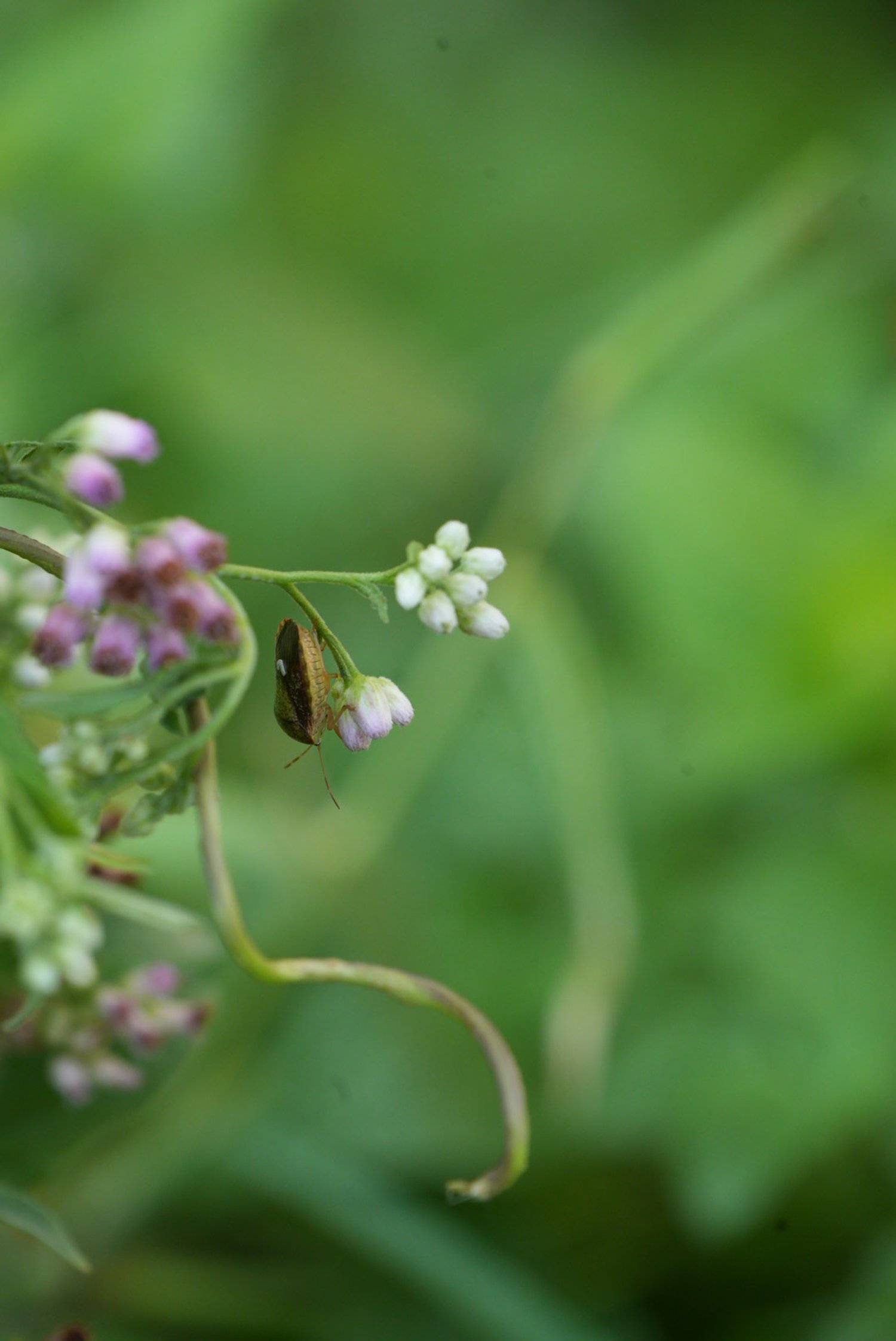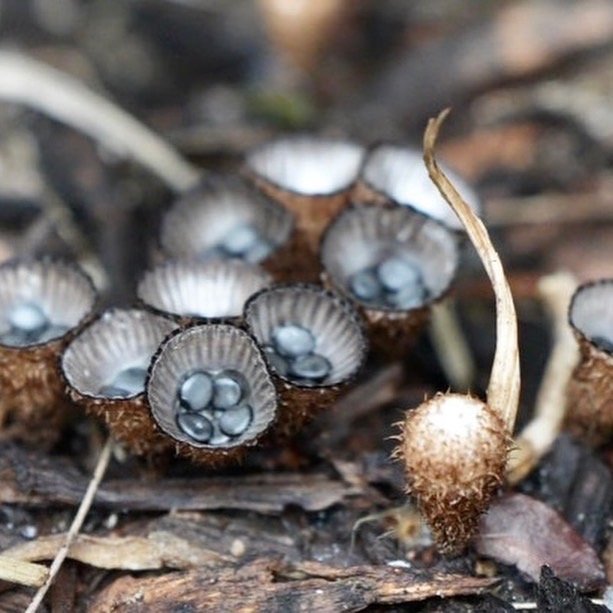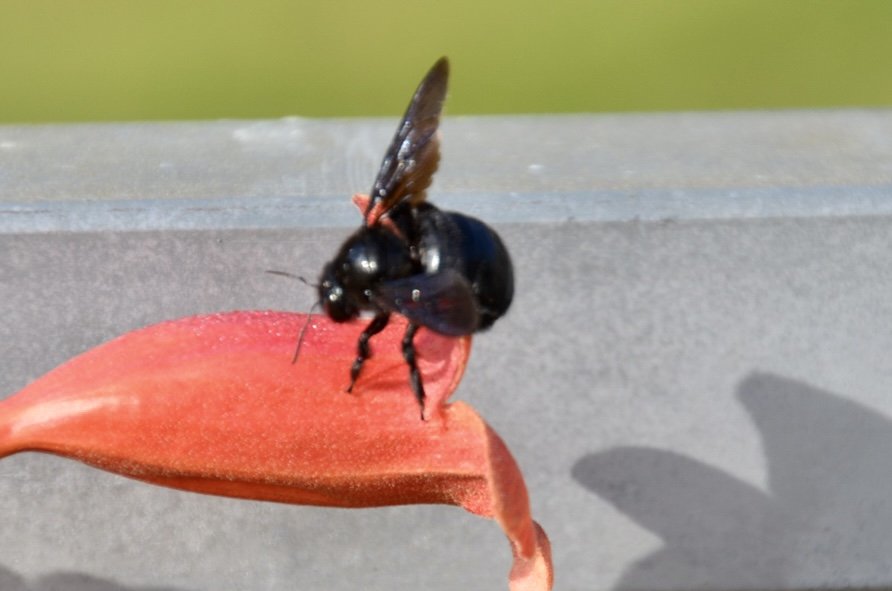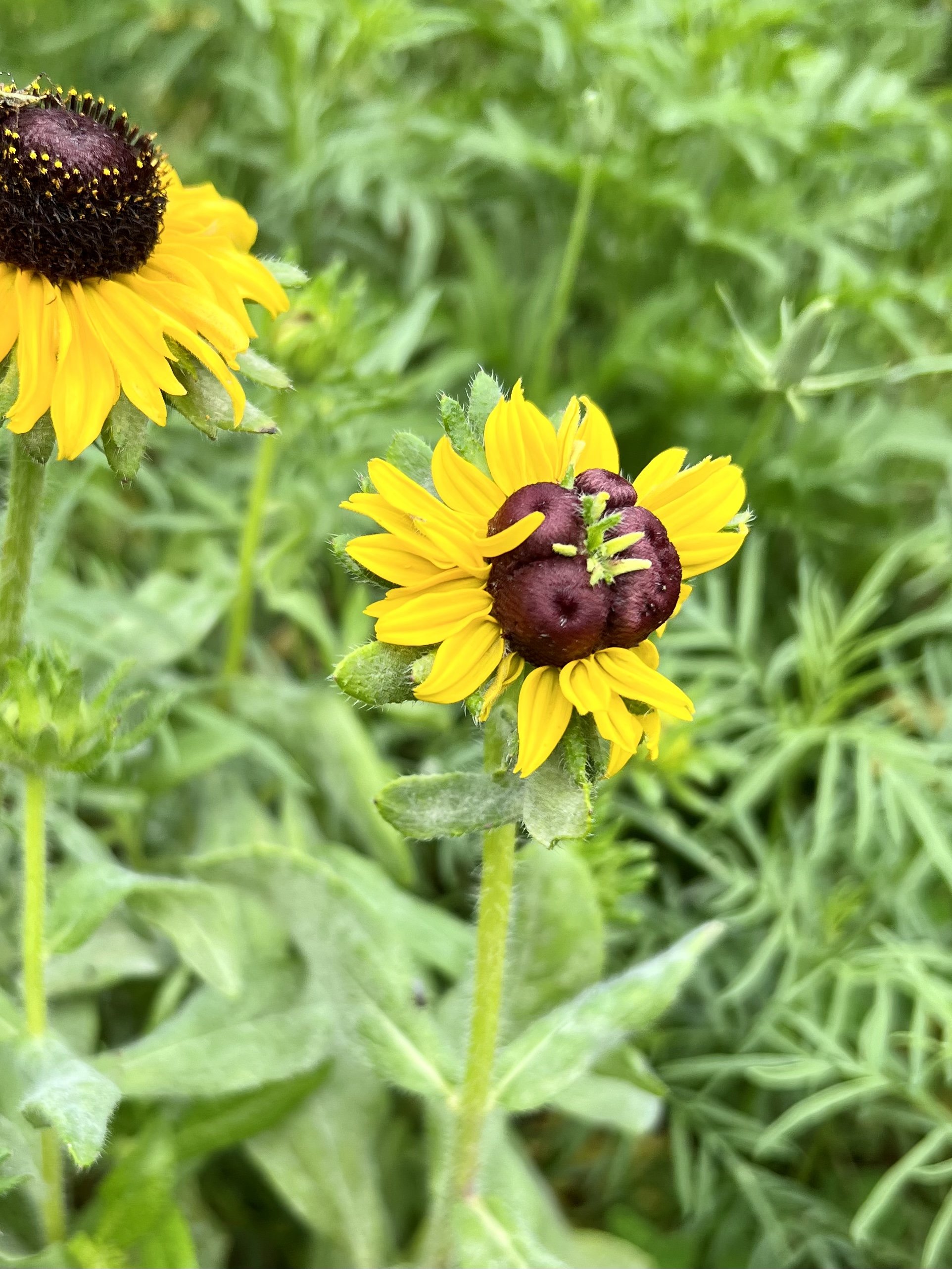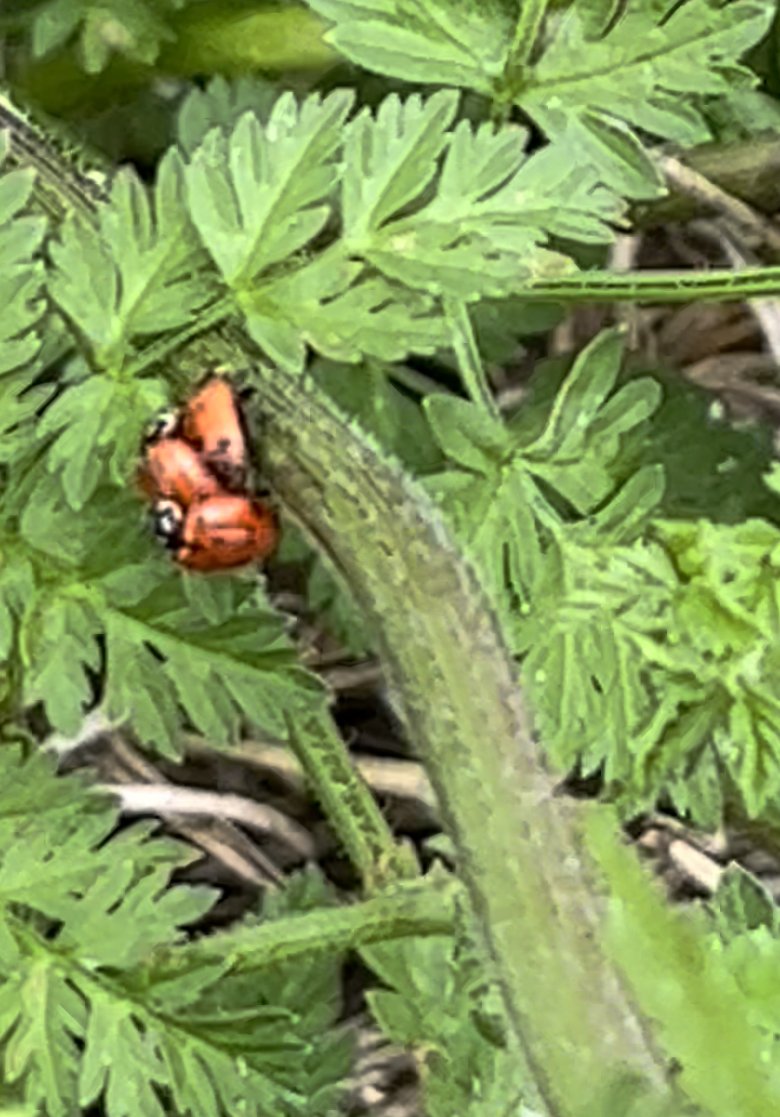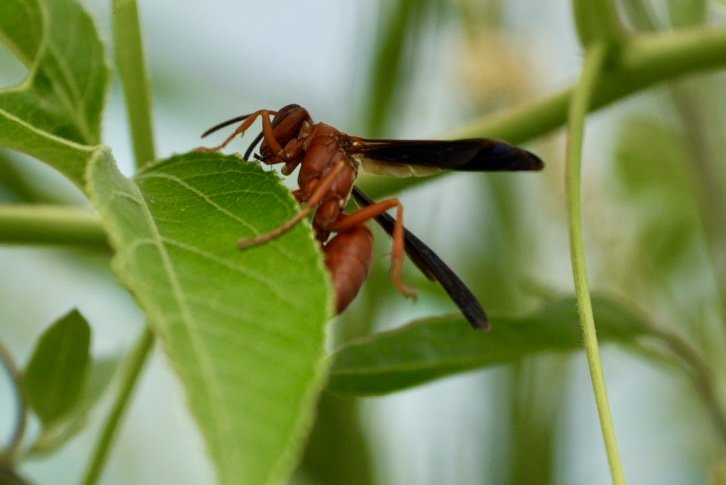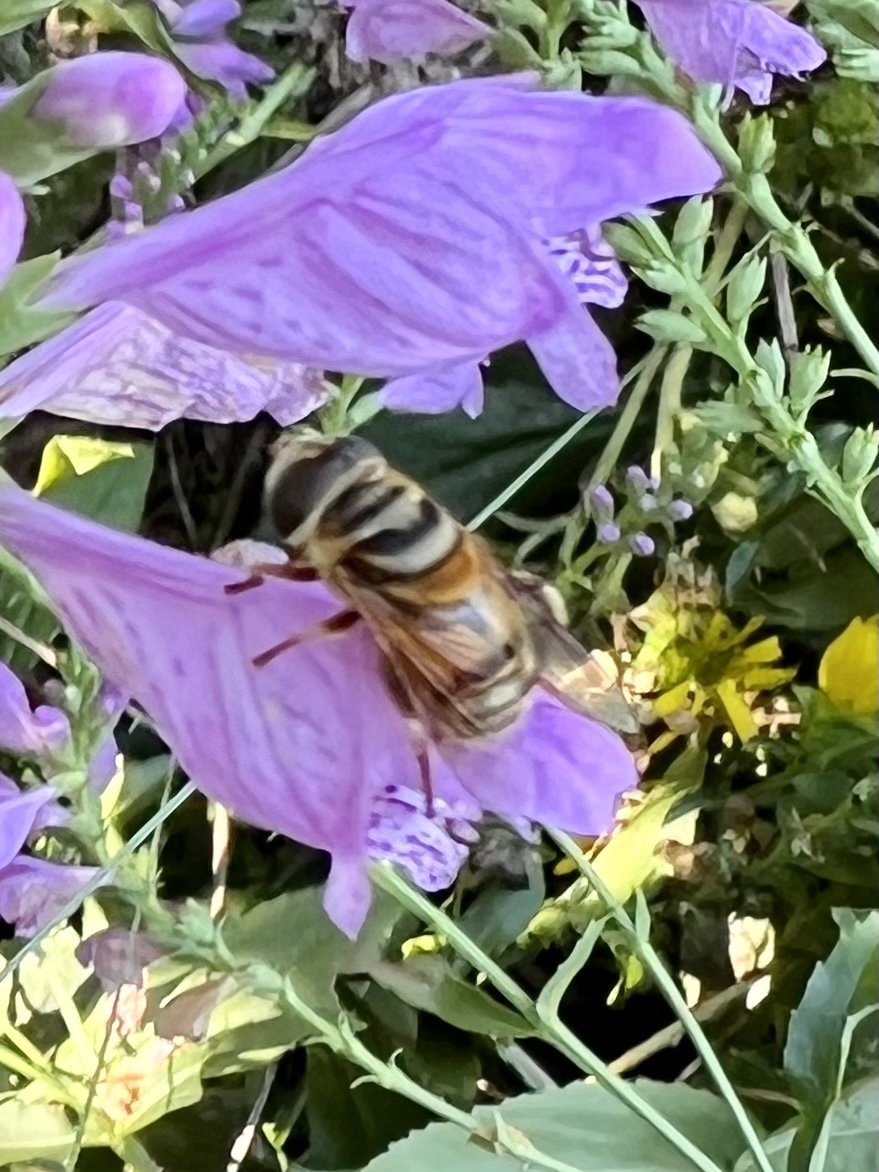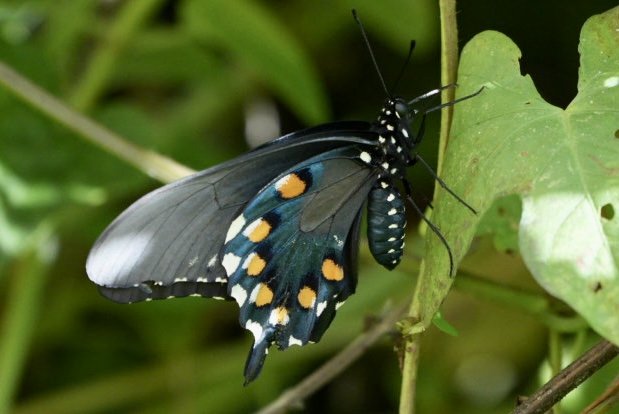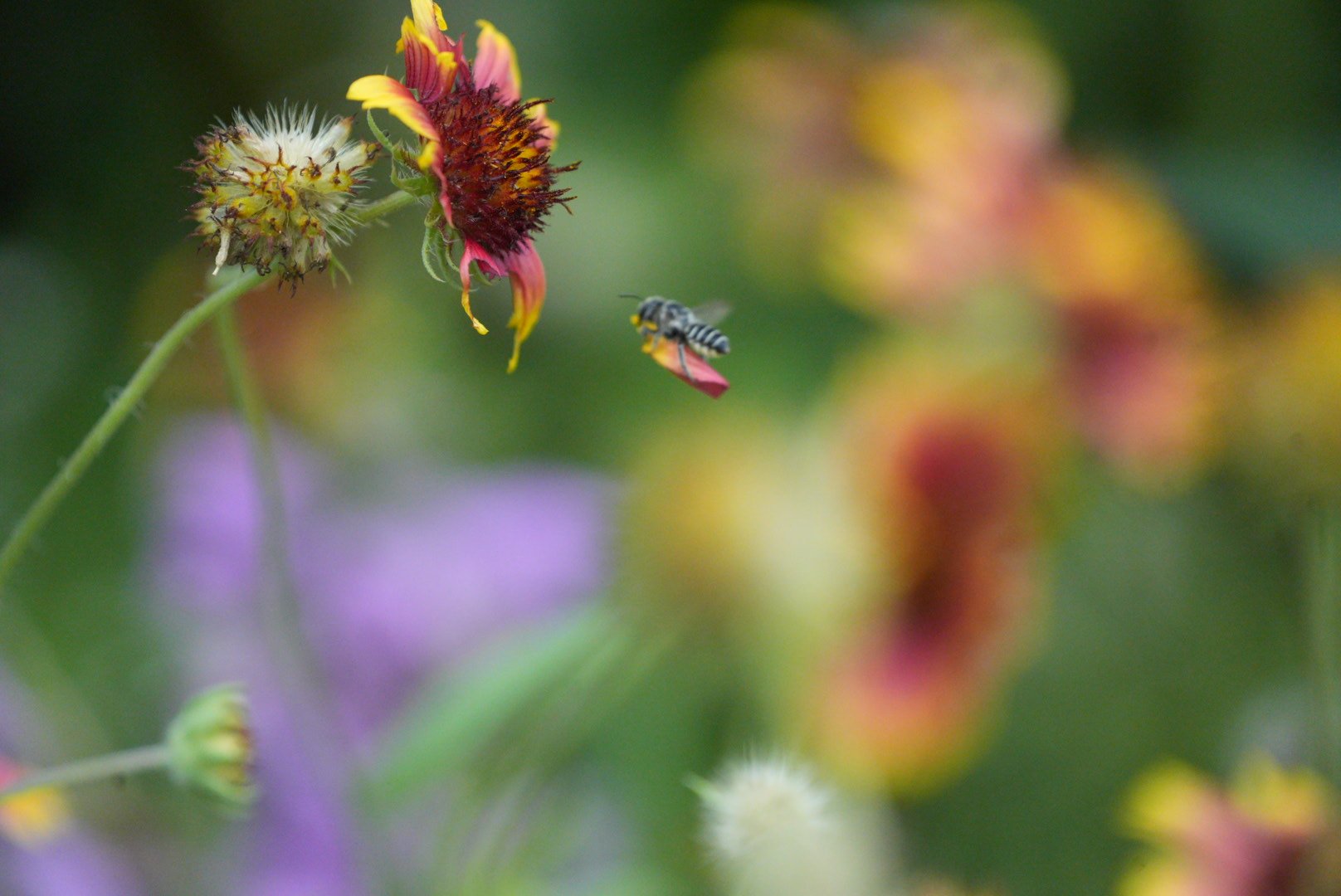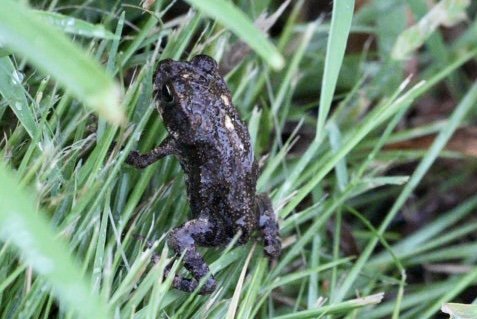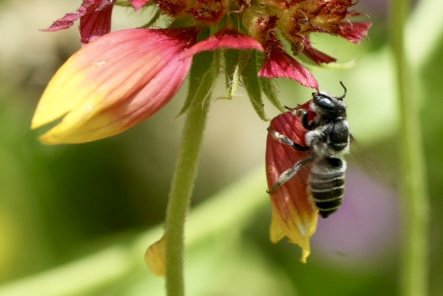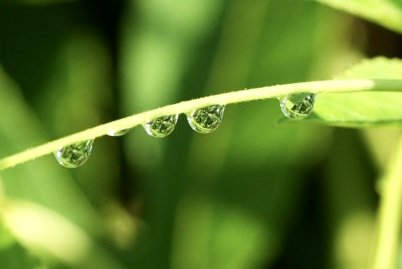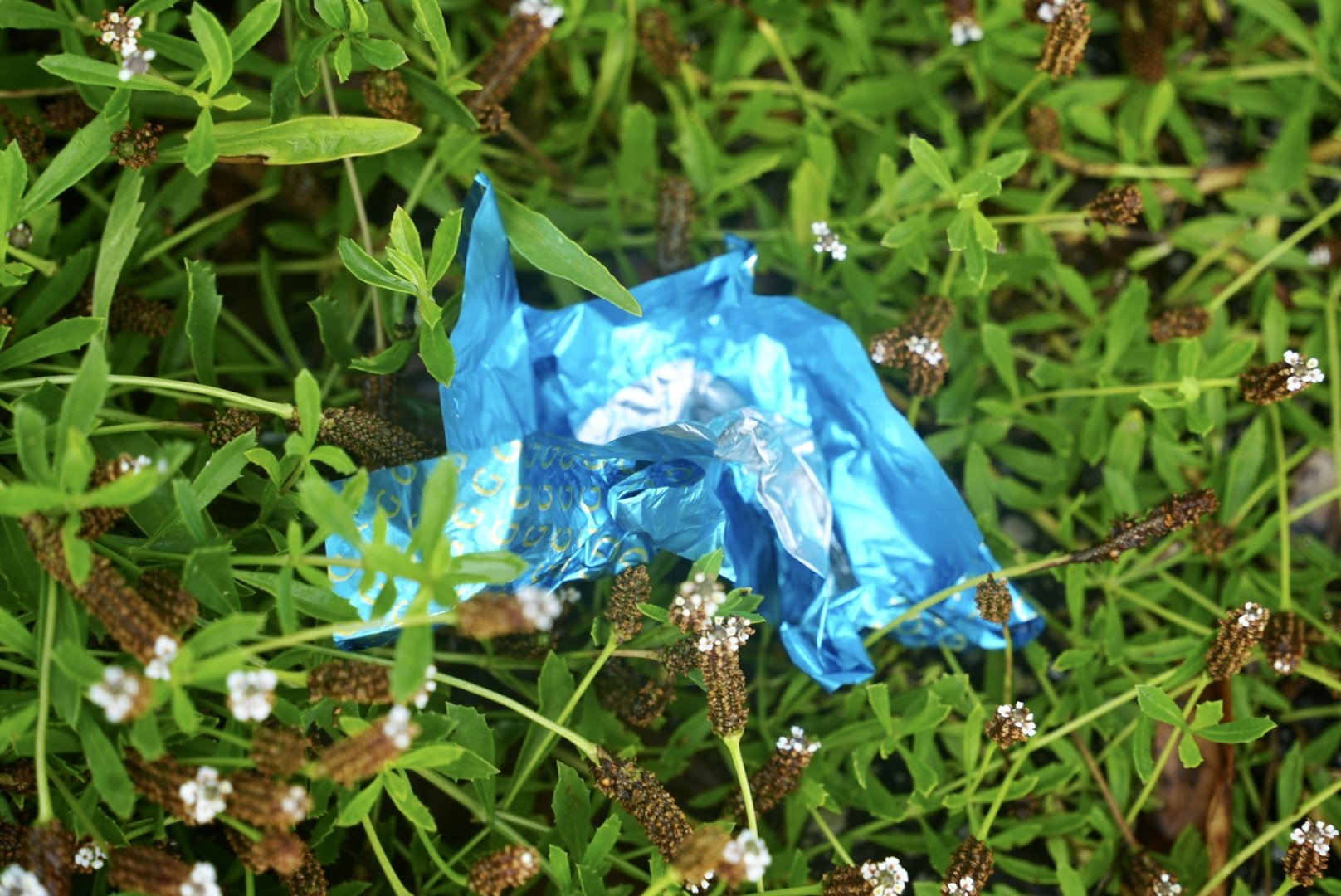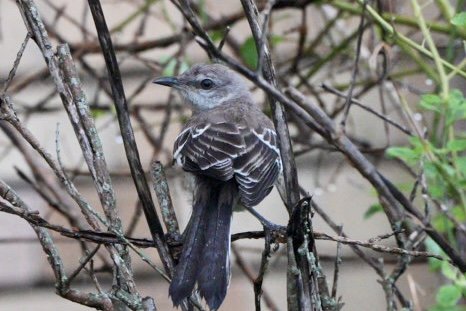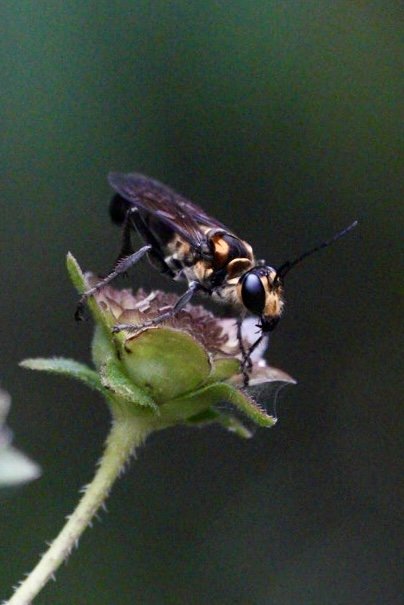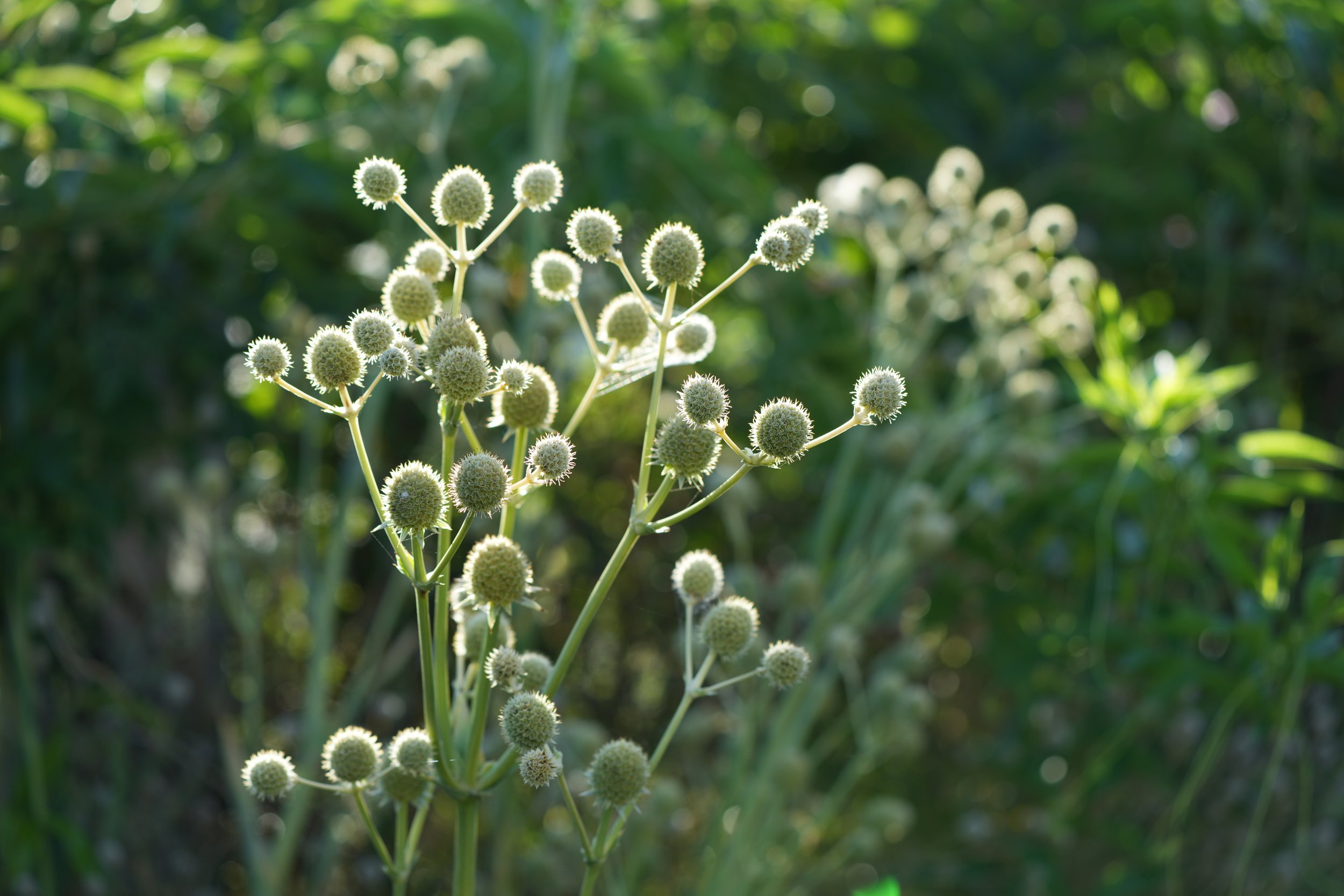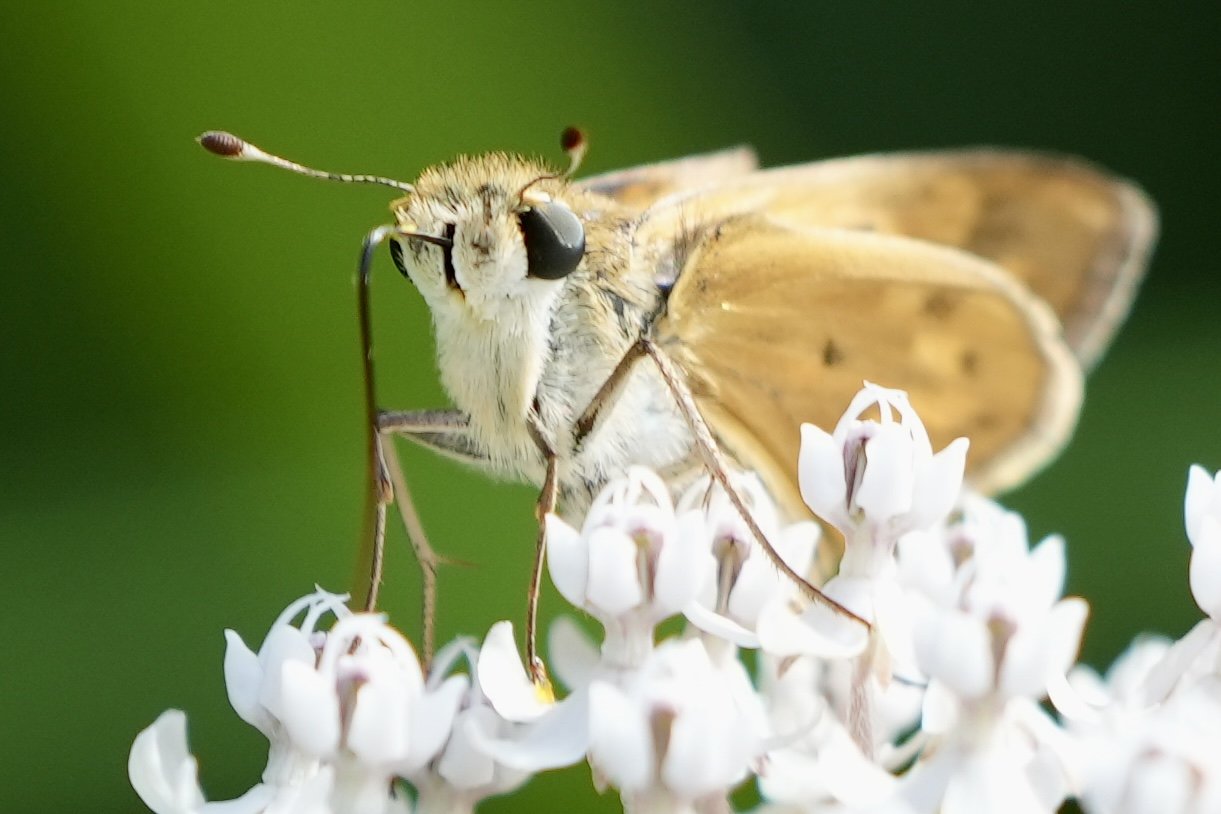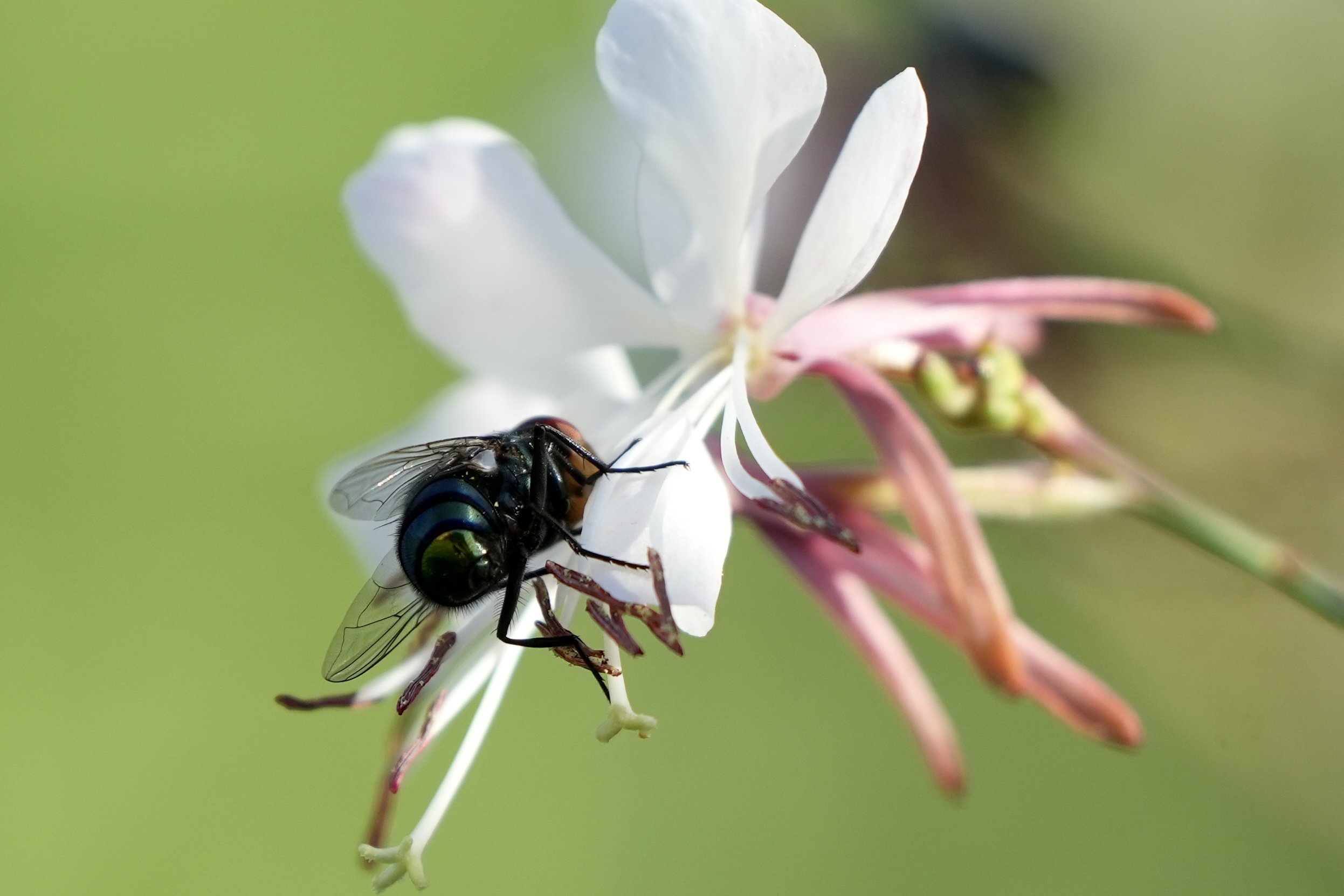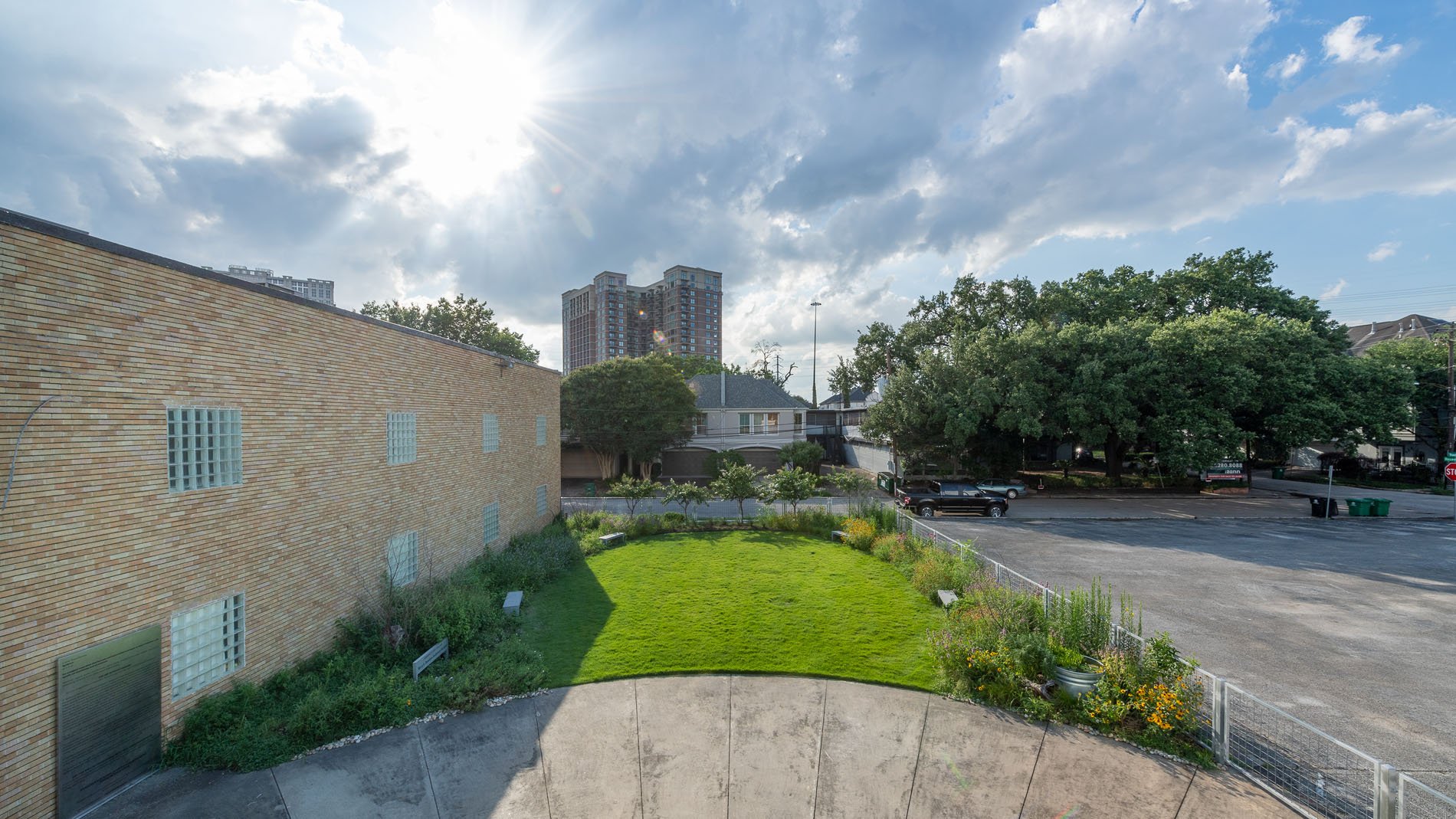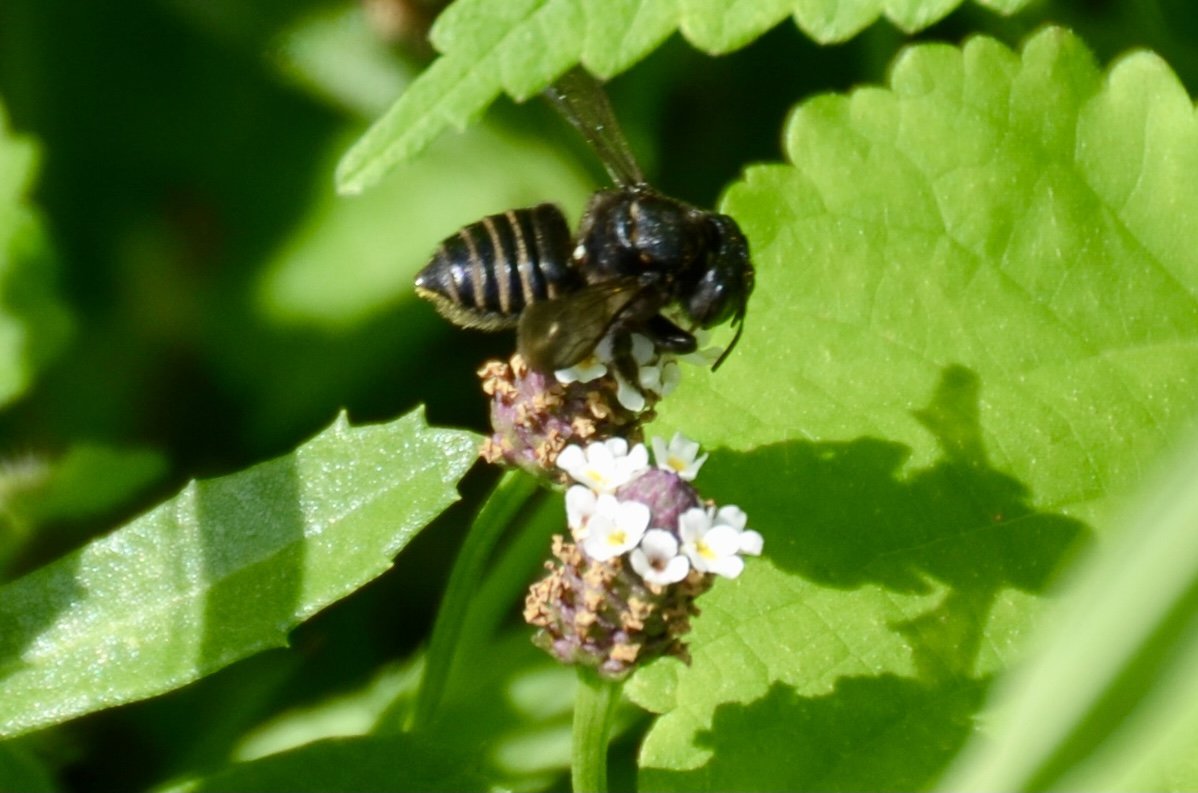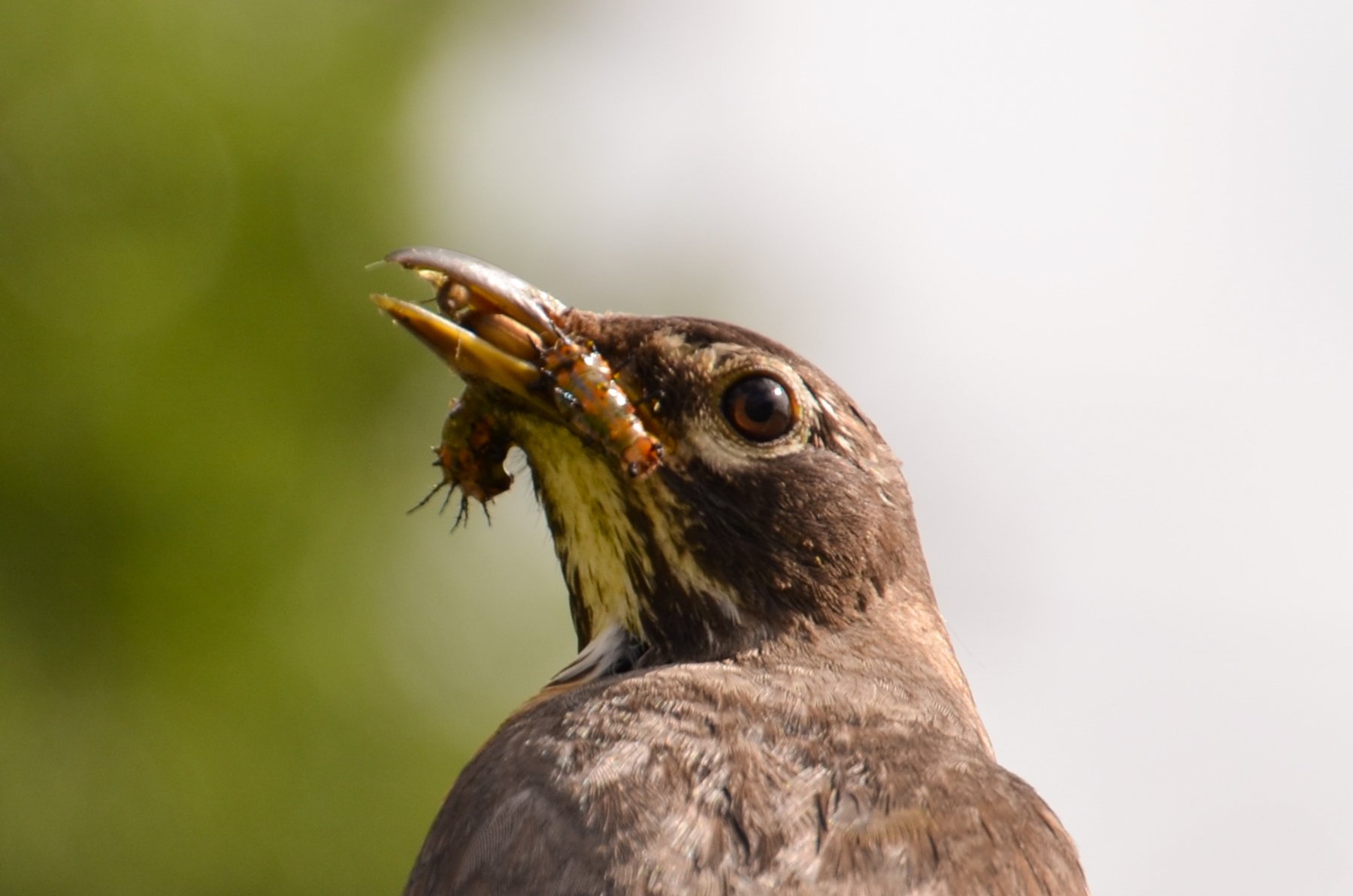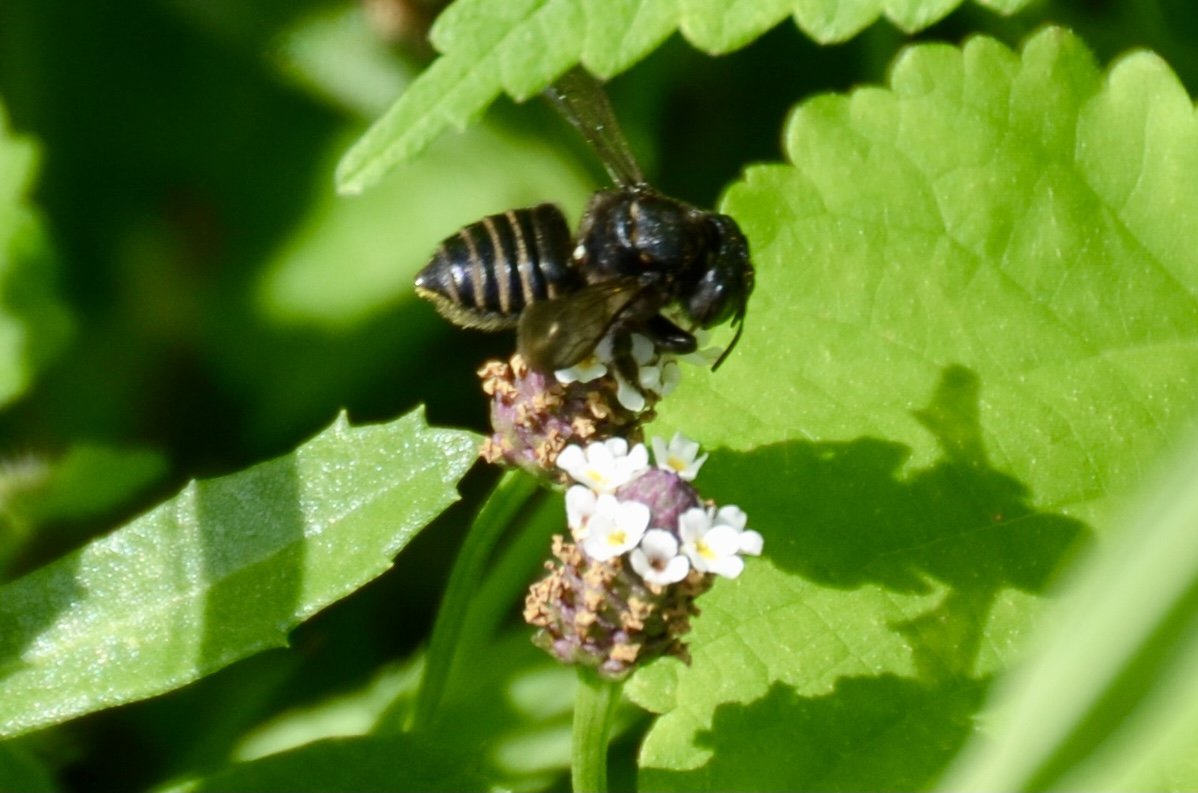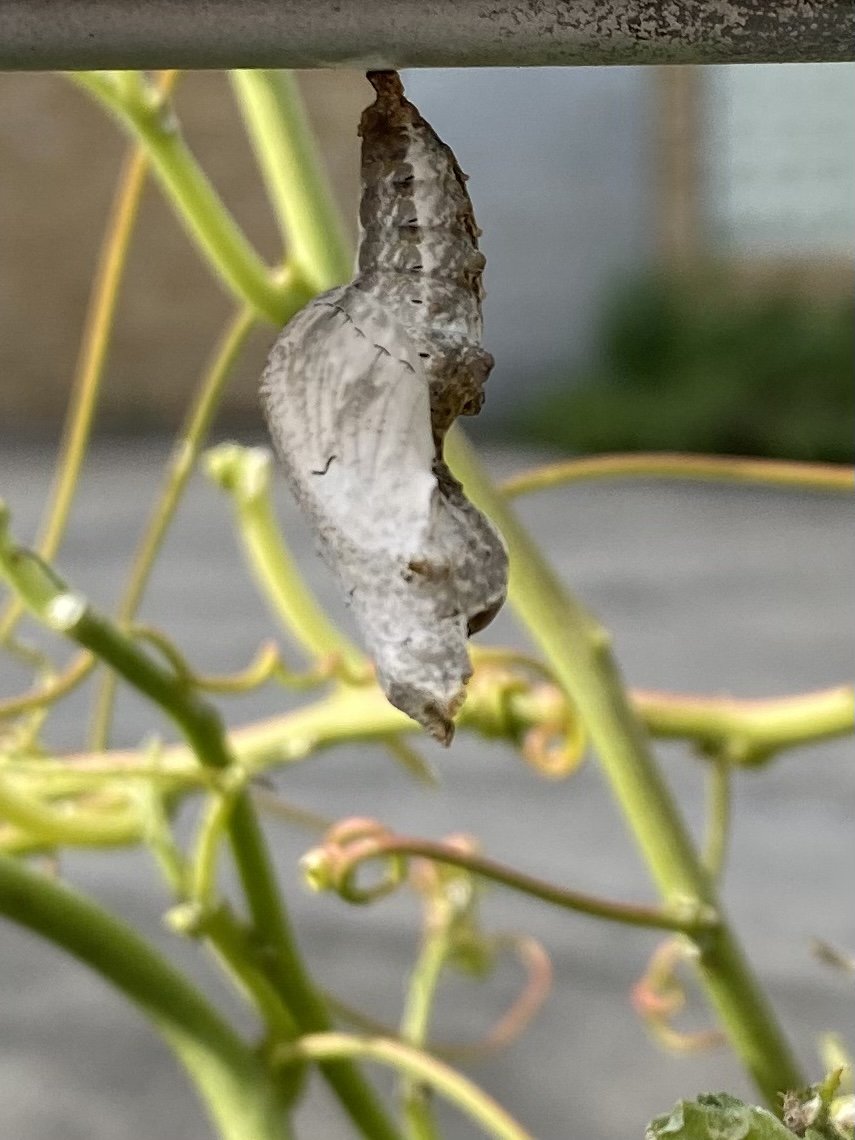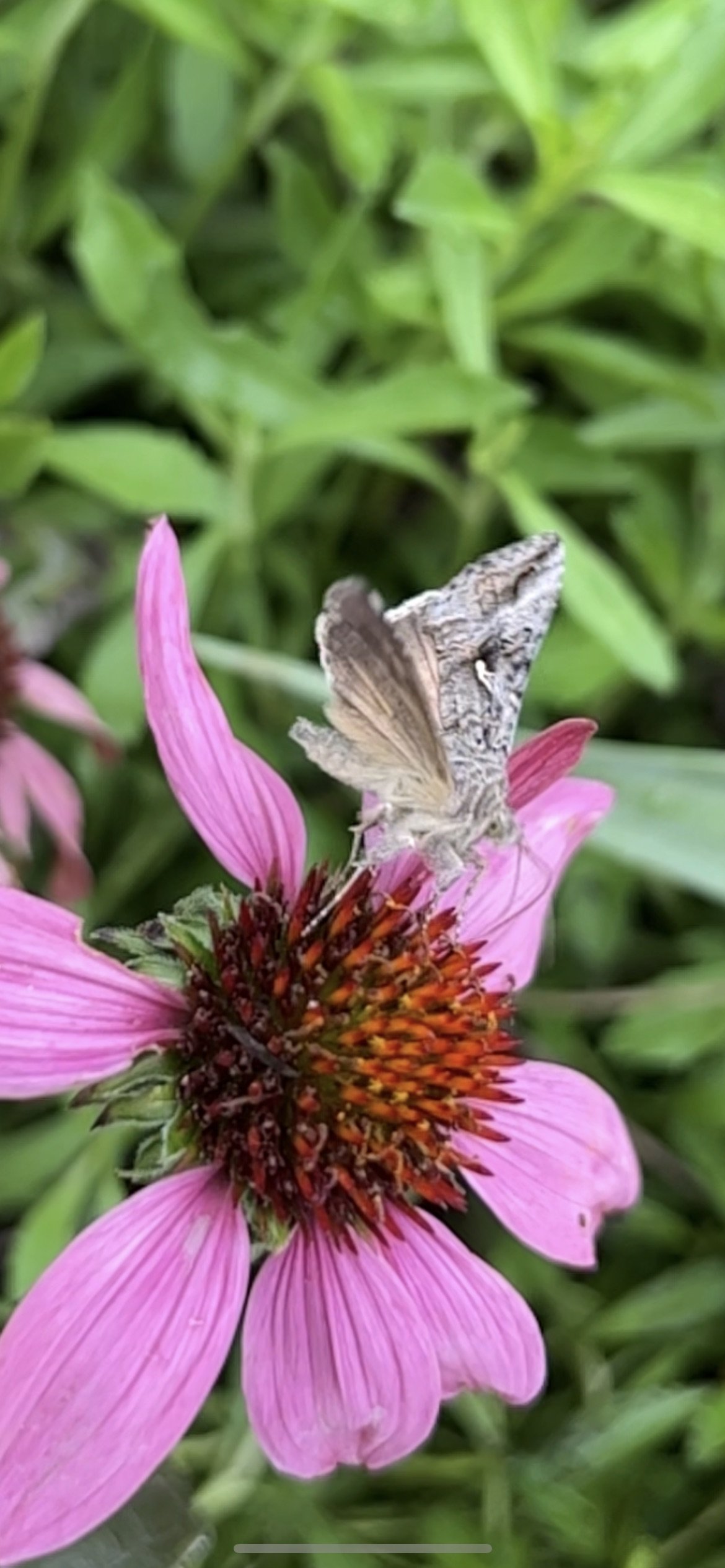Done! My gloves are proof. For weeks, my schedule was jam-packed with proposals and large-scale projects that needed my attention. Amidst all the chaos, I was also starting a brand new sculpture for the Mayor's Office of Cultural Affairs' Earth Day Celebration. I thrive when I can hyper-focus, but this time I almost let something slip through the cracks. "Earth Moves" was in danger of being incomplete by the deadline. With less than a week left to finish, I knew I had no choice but to push myself harder than ever before. I woke up at 5:00 am every day and worked tirelessly until 4:00 pm, without taking a lunch break. I felt every muscle in my arms and shoulders ache, but the feeling of being fully present and working towards something important was truly exhilarating. I couldn't disappoint Necole Irvin and let "Earth Moves" fall short of its potential. After countless hours of welding and crafting, today the sculpture was finally installed on the 3rd floor of the Julia Ideson Library. The end result is a, call for action work of art made from welded steel, lath, indigenous clay, grass, and glass beads. It was a true labor of love that I poured every ounce of myself into. #earthday @lanolalady #mayorsofficeofculturalaffairs #houstonmayor #cindeeklementart #work #gloves #drive
Symbiosis - Hairy water clover incorporates time and movement
Since the beginning of my artistic journey, I have consistently explored elements of time and movement within both two-dimensional and three-dimensional works. With "Hairy Clover," an element in Symbiosis this exploration takes on another layer of complexity - exploring how the water cycle creates motion that stores carbon, ultimately building the planet's energy.
Marsilea species are an extraordinary group of ferns, displaying a fascinating phenomenon known as nyctinasty - the daily movement of leaf orientation. During daylight hours they reach out to capture sunrays and then at night fold inwards into vertical positions due to pulvinus joints located towards the base of each stalk which adjust based on water flow into motor cells. This adaptation ensures that these plants remain attuned with their environment by regulating transpiration through stomata opening and closing cycles - remarkable!
I have read that this Texas native is endangered in many states. :(
Marsilea vestita, southern water fern
8” X 8”
Ink
Symbiosis - the research for documenting the work.
In 2020, I was asked by Lawndale to propose a sculpture for the sculpture garden. Instead of proposing one of my steel or bronze sculptures, I proposed a living sculpture titled Symbiosis. I have since endeavored to witness and record/document its growth and relationships through photography. These photographs will be my reference materials for more poetic documentation. Simultaneously I have sought out historical and contemporary ways of immortalizing natural history. My search led me to explore websites, antique stores, and estate sales, looking for how naturalists, explorers, and artists have documented Earth’s wildlife and plant life’s relationships throughout history. This research has led to the discovery of two exquisite artistic collections from 1705 and 1903 that sparked inspiration within: Maria Sibylla Merian's book Metamorphosis Insectorum (1705) as well as Theodore Jasper’s American Ornithologists' Union (1903). Both are incredibly valuable works that promise to help me find my wings and bring Symbiosis memories into full bloom.
For the next seven months, I will diligently document through photography the unique relationships as they develop in Symbiosis. When 2023 draws to a close, my contract with Lawndale runs out. Then, I will start the final chapter of the work. This project has become something special that needs to be immortalized in artworks showing their symbiotic relationships. With watercolor monotypes as my medium of choice and abstract expressionism becoming part of me along the process - these works are primed to tell stories of how humanity can reconnect with natural systems in urban landscapes.
Theodore Jasper’s American Ornithologists' Union (1903)
Theodore Jasper’s American Ornithologists' Union (1903)
Maria Sibylla Merian's book Metamorphosis Insectorum (1705)
Symbiosis Celebration — Performance Art — incorporating economics and fashion.
My research into fast fashion for my bison sculpture’s new location in an old Forever 21 has me dreaming of a unique, symbolic sculpture for my latest social sculpture endeavor, Symbiosis Celebration. I searched the resale online sites for a used/vintage acrylic bag. A simple bag, sculptural in shape, that I would fill with the large bills and dead butterflies in the Eco-System piece in my 2022 portfolio. However, as I explored acrylic vintage bags and thought about how to intertwine fashion to elevate my Symbiosis Celebration work, an idea was born. I discovered the Hermes-designed clear acrylic tote that originated during the 1996 Paris terror attacks as a tribute piece and in response for the lives lost in that tragic event and the follow-up tote for the 1997 'Hermès Souvenir de l’Exposition. The underside reads ‘Un Voyage au Pays de Merveilles’, which translates to ‘A Trip to Wonderland’.
The trip to wonderland' is the inspiration for my new work - but with a new Anthropocene symbolism behind it.
I will wear the iconic clear vintage purse filled with drop-dead gorgeous dead butterflies and large bills to the Lawndale's upcoming brunch, where my living sculpture Symbiosis is and where my idea for urban eco-tourism was born; this recycled wonderland bag promises to draw attention with a new purpose and all thanks to its meaningful content and viral hashtag potential! When Symbiosis Celebration takes off, truly the world will transform into Wonderland the Hermes team dreamed of.
On a side note, my brief research into Hermes revealed they are and have been a leader in eco concious slow fashion.
Me in my closet deciding how and what to wear with the Hermes tote. Imagine it full of bills and butterflies. I could not decide whether to go minimalist or put my best fashion foot forward. So I decided to consult with one of my favorite edgy and fashion-forward textiles artist and fashionista, Loren Siems, and Houston’s Kick Pleat team.
Wish me luck.
At the event
Image by Laura Bolton.
At the event
Image by Laura Burlton
Camouflage, fire ants and anole
When maintaining “Symbiosis” and when I observe urban landscapes, I see the beauty in decaying plants and the tiny creatures they protect. This brown anole is a garden beneficial, keeping fire ants and other insects in check. Without camouflage, they are prey for birds, snakes, and some spiders. As an artist I find beauty through systems thinking and a balanced ecosystem.
Can you find him/her mimicking a dried, twisted leaf?
Golden-reined Digger Wasp - fascinating and gentle despite its sinister appearance.
Symbiosis — Gerhert Prairie Rescue plants
Gerhart Prairie in a drought
On October 7th, I was invited to participate in rescuing prairie plants from the Gerhart Prairie south of Houston. The Prairie, I believe, is part of the Texas Nature Conservancy. A manufacturer has a fenced-off area on the property. They will put in a road through the prairie to service the fenced-in operations. We were rescuing the plants in the designated place on the future road. Several Master Naturalists identified plants, as did Mark Morganstern of Morningstar Nursery. Mark kindly reaches out to me when free and needy plants are available.
That Saturday, I received an amazing list of the plants I rescued.
1.) Helianthus angustifolia (aka Swamp Sunflower)
this is the tall 'sunflower' plant with the very narrow leaves that have the edges rolled under.
(I think I may have inadvertently referred to this as Maximillian Sunflower, which is not what this is)
2.) Baptisia sphaerocarpa (aka Yellow Wild Indigo or Yellow False Indigo)
this plant is a small subshrub in the Fabaceae (Pea Family); it has trifoliate leaves without subending bractlets and it has bright yellow flowers borne on erect inflorescences. Its fruits are round, hence the Latin name sphaerocarpa which literally means 'round fruit'. It will bloom in the spring.
3.) Euthamia leptocephala (aka Bushy Goldentop)
This plant is in the Asteraceae (Sunflower Family) and is closely related to the goldenrods (Solidago spp.). Euthamias have round-topped inflorescences rather that the 'open-spray'-shaped inflorescences of the goldenrods. There are two species of Euthamia in our area -- the other is Euthamnia gymnospermoides (aka Texas Goldentop) -- it have longer and much narrower leaves than does E. leptocephala.
4.) Croton lindheimeri (aka Woolly Croton or Lindheimer's Hogwort)
This plant is a member of the Euphorbiaceae (Spurge Family). It has very small unisexual flowers surrounding by a yellowish tomentose hairs; the female flowers are borne near the base of the inflorescence while the male flowers are bunched near the apex of the inflorescence. This seeds of this species are an important food source for quail and dove and the plant is a larval host for several species of butterfly.
5.) Neptunia pubescens (aka Tropical Puff)
A member of the Fabaceae (Pea Family) in the Mimosoid clade (or subfamily) which means it does not have typical pea-shaped flowers. The flowers are bunched onto a round receptacle or head, each with a small inconspicuous corolla, but the numerous long stamens are quite showy. Neptunia pubescens sprawls along the ground. It is larval host plant for the ceranus blue (Hemiargus ceranus) butterfly and its seeds are consumed by many wildlife species.
6.) Lythrum alatum var. lanceolatum (aka Winged Loosestrife)
This member of the Lythraceae (Loosestrife Family) grows to be about 3-4 ft tall and produces long racemose infloresceces with smallish lavendar (pink,purple) flowers. It is a special value to native bees and is also used by hummingbirds and butterflies.
7.) Eupatorium serotinum (aka Late-flowering Boneset)
A member of the Asteraceae (Sunflower Family) which has rayless sporting only white disc florets. It is a perennial that emerges early in the year, but does not bloom until August - November. While it's flowers are small there are many of them, so that the plant is a real show-stopper in the fall. It is of special value to native bees and its nectar attracts butterflies and many other insect species and it seeds are eaten by many bird species. The plants you dug up were fairly small (maybe due to the drought this year; the species usually grows 4-5+ feet tall.
8.) Agalinis heterophylla (aka Prairie Agalinis, Prairie Geradia, False Foxglove)
This is a member of the Boraginaceae (Borage or Broomrape Family). There are several species found locally, but the most common is Agalinis heterophylla, easily distinguished by its deeply lobed calyx. It is a larval host for the Buckeye butterfly and attracts numerous insect species, including bees and bumblebees.
9.) Ludwigia octovalvis (aka Mexican Primrose Willow)
A member of the Onograceae (Evening Primrose Family), this plant likes its feet wet, so a low spot that collects water is a great place to plant it. It is fast growing and reseeds readily. It is a nectar source for butterflies and other insects and is a larval host for the water primrose hornworm moth (now there's a mouthful!).
10.) Conoclinium coelestinum (aka Blue Mist Flower)
Another member of the Asteraceae whose flowerhead do not have ray florets, but the long stigmas of the disc florets make for a showy flowerhead nonetheless. This species is NOT an annual (as I misinformed you yesterday, sometimes things stick erroneously in your mind), but rather a perennial that dies back to the ground each year and also spreads readily by seed. It attracts many late-season butterflies. It can be a bit 'bossy' as Mary Spolyar put it, but as I have found with vigorous natives a bit of pruning/thinning doesn't hurt them in the least.
I look forward to watching them thrive in Symbiosis.
The rescues
Symbiosis Relationship 9/2022
Skipper and Pokeweed
Endangered bumble bee and Salvia
Coral honeysuckle and a native bee.
Mocking bird using an American Westeria vine as a lookout for insects to eatt.
Passiflora incarnate and carpenter bee.
Turkey tail mushrooms breakdown rotting trees recycling the nutrients.
Jumping spider
Pachodynerus erynnis, known generally as the red-marked pachodynerus or red and black mason wasp and Lantana camera. Lantanas are complex, I am not certain if this is a native to tropical US or an import. I think it is camara since I see beetles and wasps on it.
Clouded skipper on Lantana camara.
Common green June beetle and lantana camara.
Genus Pyrisitia minisa Yellow butterfly
Golden-reined Digger Wasp
Despite its vivid alarm coloration, the Great Golden Digger Wasp is not an aggressive species of wasp. They tend to mind their own business and can be found sipping on flower nectar during the summer, but in the early spring, females prepare to lay eggs.
Females will dig into loose soil and create many deep tunnels. When established, she then covers them to hide their existence. A female will track a small insect and sting them to paralyze them, but not to kill them. Once the prey is immobile, she will clutch it using her antennae and mandible (mouth parts) in order to fly it back to the tunnels. While in flight with her prey, it is not uncommon to see birds like robins or tanagers attempt to steal her meal from her by chasing her until she drops it. No other known species of Digger Wasp is known to be harassed by birds in this way. If the female is successful in returning to her tunnels with her catch, she will place the paralyzed prey aside to quickly inspect a tunnel. If it looks like it's still intact, she will pull the paralyzed insect, head first, down into it. She then lays an egg on the insect, exits the tunnel, and covers it over again. She repeats this process for each tunnel. Unlike other wasps, she does not actively defend her nest. Once hatched, the wasp larvae will feed on the living, yet immobile, insect until they are developed enough to leave the tunnel lair in the summer. Eventually, the parasitism of the paralyzed insect kills it.
Scientists are studying the behavior of this unique species. Great Golden Digger Wasps seem to display a type of internal programming. If their insect prey is moved away from the tunnel while the female inspects it, she will emerge, relocate it, bring it back to the tunnel entrance and start the inspection all over again. Every female exhibited the same repetitive 'start inspection again' behavior when tested in that way.
Females have also shown that they do not keep a tally of how many insects they catch versus how many tunnels they create. If some meals are stolen by birds, they do not realize that they are short on insects compared to tunnels.
With such gorgeous orange and black coloration, mild demeanor, and interesting behaviors, the Great Golden Digger Wasp is one to admire, not destroy. Perhaps a careful observer will discover even more fascinating things about this species.
Symbiosis - the ripples
For many artists, satisfaction comes from selling their work. For me, happiness comes when others mimic my work.
A little over a year ago, I met a young couple with a commercial landscape business dept. I invited them to be part of my social sculpture water + air + citizen that took place this past winter. I shared with them the next phase of Carbon By The Yard. This spring I among many volunteers, briefly helped Maggie and Isaac install their inspiring monumental version this spring. Luckily it survived the drought and made the Chronicle.
This Novrmber 5th carbon By The Yardwhich will take place this November 5th. During the community family celebration on November 5th, the relief Carbon By The Yard will be transformed into Carbon Sink. Stay tuned to learn more.
Symbiosis Celebration — Social Sculpture
Symbiosis Celebration
Social Sculpture
Proposal
By
Cindee Travis Klement
Proposed to Mayor’s Office of Cultural Affairs June 8, 2022
Fall color tourism contributes $1 billion per year to North Carolina. Houston has Fall color migration,
we can cultivate it into tourism and build soil health.
—from Chemical Plants to Native Plants—
Native Wildflowers, Food, Art and Music Festival
“If you dig deep and keep peeling the onion, artists and freelance writers are the leaders in society - the people who start to get new ideas out.” — Allan Savory
In April 2021, I installed the first native plants into Lawndale's sculpture garden. Within two months, Symbiosis exploded with bountiful native blooms. Plants expected by the Ladybird Wildflower website to be one to three feet tall in Symbiosis were instead two to four feet tall. In June, the endangered native bees started returning. In the first twelve months, I have witnessed seventy new species in the space: from bird nest fungus to Red Admirals, Monarchs and skippers, skimmers, one of the bumblebees listed as endangered, Bombus pensylvanicus, treefrogs, toads and birds.
Since Hurricane Harvey, harnessing the power of public opinion to mutualistically build Houston's landscapes into healthy ecosystems has been the focus of my art practice.
In our web meeting, I explained that in my artwork, Symbiosis, sponsored by the City's Initiative Grant at the Lawndale Art Center, I integrate holistic, regenerative biological systems into an urban landscape. I was inspired to create Symbiosis because I have read that our cities are fast-forwarding evolution. If this is true, integrating holistic, regenerative biological systems into urban landscapes will fast-forward ecological recovery. In Symbiosis, I use systems thinking to find a balance between humanity and Houston's wildlife; already, since the installation began in 2021, we are seeing a return of the lower food chain, which is critical for supporting birds and other wildlife that control the insects harmful to humans.
In the systems thinking state of mind, I also realize that profit is the fuel that will change society's landscape practices to embrace the planet's ecological systems in Houston. Applying economics and industrial concepts to the work, I propose that ecotourism is an untapped resource that can strengthen our environmental and economic health. I am writing to you with a proposal to start a wildflower festival, a Symbiosis Celebration, that ultimately encourages and celebrates new mutualistic relationships between Houstonians and the planet. Through fostering symbiotic relationships that regenerate Houston's micro-ecosystems, we will move our reputation from Chemical Plants to Native Plants — we can prosper as the Green Energy City.
STIMULUS
18” X 4.5” X 10”
$1500 in large bills and passed butterflies.
Building Mutual Symbiotic Relationships to Power Ecological Recovery
I envision this festival cultivating relationships among the City of Houston, local property owners, Houston's indigenous landscape and its wildlife, soil and climate, food, restaurant, music, visual and performing arts, museums and professional sports team communities.
The following steps will contribute to building these relationships:
· The business and private property owners will need to redirect their existing landscape budgets to native plants that support our wildlife.
· These new landscape practice guidelines will align with the Mayor's Office of Sustainability and Resilience.
· New native wildflower and grass landscapes will slow rainwater, allowing it to soak in and return to the aquifer to cool the planet while sequestering carbon and storing it in the ground where it is stable, providing food and safe habitats for our indigenous wildlife.
· The approximately six hundred species of birds, four hundred and thirty species of butterflies, eight hundred species of Texas native bees, one thousand species of moths, eighteen species of dragonflies, thirty species of turtles, including two box turtles, and seventy-two species of amphibians native to Texas will expand their populations in our city.
· Houston's creatives in the food, restaurant, music, visual and performing arts, museums and professional sports industries will respond to the new mutualistic/symbiotic relationships among Houston's landowners and our unique plant and wildlife in exciting creative ways and performances during the festival.
· The City of Houston will promote, market, and support the above-described new relationships with its services infrastructure, completing the mutualistic relationship that will support Houston's economy and ecosystems.
Why Houston Can Support Ecotourism
Although Symbiosis taught me the speed with which an urban landscape can transform into a wildlife haven, it was not until I was in Fredericksburg that I realized Houston's ecology is an untapped tourist economy. When you combine Houston's rich soil, high humidity, heat and long growing seasons with the indigenous native plant landscapes supported by Houston's urban irrigated commercial and park landscapes, Houston's native plant wildflower and wildlife tourism can far exceed those of the small towns in Central Texas. Another tremendous asset is Houston's central geographic location in the bird and butterfly migration paths between the North and South American continents and our proximity to the Gulf Coast. Texas has the most butterfly species of any state in the U.S. Houston's inner city is 600 square miles; our "sprawl" is an asset to urban ecotourism.
As additional support that Houston can be an ecotourism powerhouse, I have read that one of New York City's most popular tourist attractions is The High Line's native landscaping. In North Texas, Plano also uses wildflowers and music to attract tourism dollars.
Funding
I see businesses and organizations all over the city which are starting to take advantage of the ecological benefits of native landscapes. Unfortunately, many other property (business and home) owners are unaware of the economic and environmental benefits of native plant landscaping. They spend $50-$100 per hour for weekly maintenance and $4—$12 per square foot for seasonal plantings, while also incurring high water usage and bills. Suppose the City appeals to these businesses and individuals to convert their existing non-ecological landscape budgets to native wildflower and grass landscapes. In that case, the City can promote a native plant/wildflower and wildlife, food, arts and music festival that will symbiotically support native ecological systems. The supporting businesses can profit from the tourism they generate.
When
With Houston projected to double in size by 2050, if we start now, benefits will compound. The timing of the festival should fall during one of the migration periods.
The Texas Can-Do Spirit
Systems thinking to mitigate climate through industry and the arts is a new territory — will Houstonians embrace this new field of thinking? In Texas, that depends on how you ask and present the need. In our recent history, from Katrina to hurricane Harvey, unsolicited Houstonians volunteered to help their neighbors. In 1901, wildcatters discovered Spindletop, drawing people worldwide to build a better life in unknown territory. “Wildcatter” is used to describe one that drills wells in areas not known to be producing fields. The spirit of the wildcatter is deep in our Texas Can-Do Spirit. It is in our nature to embrace a new field of wild.
The Next Step
Recently I went to a free event at the Ion; the people giving the talk are in the business of researching the economics to support new business ideas. They also create "stacks" or PowerPoint presentations to gain financial support for new ideas. Their fee is $6,000. Unfortunately, it is beyond my budget.
Is this sort of analysis provided by the Mayor’s Office of Cultural Affairs or another City of Houston office to determine the new cultural or social events that would benefit our city?
The support of the Mayor’s Office of Cultural Affairs is critical for social sculpture to transform the city from Chemical Plants to Native plants and earn the title of The Green Energy City.
Monotype- leafcutter (petalcutter)
Leafcutter (petal cutter) Megachile and the Blanket flower
Watercolor and pastel monotype
30” X 44”
Leafcutter bee flying to its nest just after cutting a petal from the Texas native Gaillardia pulchella aka blanket flowers. They use the petals to protect walls and to seal their nests. In exchange for the petals, the leaf cutter pollinates the blanket flowers bloom. It is one of my favorite relationships in “Symbiosis.”
The white pedestal?
When I started in the MFAH Glassell School block program, I needed pedestals for my smaller sculptures. I made stark white cubes as I saw in museums and galleries.
Over the years, my work has transitioned to tell a specific story. I make work to reveal the beauty in diversity, the messiness in the natural world and the connections between all living things on the planet. And most importantly, I work to inspire society to step into a rhythm that will flow with the natural world and celebrate the beauty in its messiness. My work conflicts with borders that separate, clean lines that divide and sterile objects.
The white cube pedestals are a symptom of sameness, monocultures and sterile environments, a symptom of me wanting to ” look “ like I belong and fit in. A change is an imminent.
I am leting my eyes and mind play with how objects that physically support my work should look. Work that reimagines urban landscapes to balance humanity and natural systems should not be sterile cubes. What should, - what could they be?
The images below are some thoughts I am considering. .
Rocks
Bricks
Stones or concrete.
Cracks
Dried plant material
Electrical wire
Upcycled lawn furniture.
Palm tree trunk skin
Salvaged construction site rotting root with interesting chain link necklace imbedded across her shoulders.
Symbiosis - relationship 8/2022
Orange blister beetle and Ratibida columnifera
prairie cone flower. The beetle eats problem insects.
Gulf fritillary butterfly's mating and green anole ruins the mood.
Xylocopa virginica, the Eastern carpenter bee has evolved to the exact height to Maximize pollinating Passiflora incarnation. This relationship is one of my favorites in Symbiosis.
Soaking wet American bumble bee (endangered bee) using a Missouri ironweed leaf as an umbrella.
black mud daubersa, is a solitary wasp. This female his hunting for caterpillars to provision her mud nest. Plants recognize the vibrations of caterpillars chewing. This causes the plant to send out pheromones to attract wasp to keep the caterpillars down. She seems frantic.
Ascra bifida, exploring crabgrass and Marsh Fleabane (both volunteer plants) hunting for moths, caterpillars, harmful beetles, aphids and other pests. They are valued citizens in “Symbiosis”. Oddly there is very little online about this sweetheart of a stink bug.
American Mockingbird and American beauty berry.
On the left side of the image perched atop the dead olive tree a Mockingbird searches for insects. Camaflouged by the orange trick background a juicy dragonfly flies into to the upper right corner of the frame and catches the alert Mockibgbirds attention.
Cyathus stercoreus
Dung-loving birds nest fungus also known as splash cups.
Cyathus stercoreus
Dung-loving birds nest fungus also known as splash cups.
When a raindrop hits the cup's interior, the peridioles are ejected into the air tearing open the purse. In the lower part of the purse, the coiled funicular cord expands. The peridioles, followed by the sticky funicular cord and basal hapteron, land on a nearby plant stem or stick. Flying through the air, the line wraps around the plant's stem. The peridiole remains attached to the vegetation. In a natural setting, a grazing animal may eat it and later deposit it in that animal's dung to continue the life cycle. This amazing amazing creature breaks down dung, and captures raindrops.
Brown Anole
The ESTERN CARPENTER BEE AND PASSIFLORA INCARNATA
A dragonfly lays eggs in the still water of a trough pond. Her nymphs keep the mosquito larvae in check and are protein for the Texas mosquitofish.
Symbiosis - The first anniversary and a feisty or rebellious future.
What would the next twelve months look like?
A two-year-old can be feisty, or would it be more like a rebellious teenager coming into its sexuality?
April of 2021, I started installing the plant material in “Symbiosis.” Seeing, hearing and smelling the transformation has been a gift. This past spring marked the first anniversary. This post celebrates the relationships and natural systems I have documented from the first anniversary through mid-August.
Keep in mind that in the summer of 2020, when I agreed to install a site specific living sculpture, I went every day to observe the space. Sitting and looking — observational research is a big part of my work.
How did it function in the ecosystem? The mowed nonnative zoysia turf grass was neat within its “borders.” The nonnative shrubs and plants were in aligned rows amongst compressed dirt and it was static. As the summer days warmed the bare spaces, the rising heat never created any movement in the garden. It was designed in rows and easy to maintain with gas-powered mowers and edgers. The first soil test revealed that the garden was void of life. The lower food chain of earthworms and grubs was absent. That explained why the birds flew by without landing. There was nothing for them to forage or seek shelter from predators. It did not soak up much water and sequestered little carbon. Lawndale’s Sculpture Garden was a dysfunctional plot of earth. It was green but not part of the coastal prairie ecosystem.
In a sea of Midtown asphalt and groomed properties in April of 2021, I questioned; would any wildlife find the small space? Failure was possible.
Nature was undeniably resilient in year one. Symbiosis was a living sculpture, a functioning part of the coastal prairie and the New World. The installation was not land art; it was a living ecosystem. It regenerated life.
On Mother’s day after the first big rain, the pond was full of white green treefrog eggs. The relationship between amphibians and clean water and important in building the lower food chain and keeping it in balance. for more details see the post Symbiosis — Green Treefrog Eggs.
Cricotopus rests on the Lawndale Art Centers building. This image is symbolic of a nonprofit art institution’s commitment to it's relationship with the natural world. Hopefully it will inspire others.
Large carpenter bee on a trumpet vine bloom.
Mutation of a rudbeckia hirta. A reminder that being different is beautiful.
the chemical free trough pond provides a habitat for toads to mate and leave their eggs. The tadpoles in return eat algae keeping the water clear and mosquito larvae. #social sculpture.
White-striped longtail enjoying a Rudebeckia hirta bloom.
Anole asserts his dominance on the trunk of a dead olive tree.
Ischnura hastata Citrine forktail on a frogfrut leaf.
Blue dock beetle enjoying the nutrition of a volunteer plant.
Spilosoma Virginia on a Rosinweed sunflower leaf.
Cricotopus Non biting midge on Rosinweed leaf.
Hippodamia convergens convergent lady beetle, on a volunteer plant.
unknown - But interesting
Celithemis fasciata and frogfruit.
Native bee _________ and Rosinseed sunflower.
Repipta taurus , Red bull assassin bug and painted blanket leaf.
Dolba hyloeus pawpaw sphinx and fall bedient plant
the perfect match a native carpenter bee’s body has evolved over the ages to fit the Passiflora incarnata perfectly.
Libellulidae- skimmer and docks. I often find skimmers perched on this past dried docks. They have a strong bond.
Mother Mockingbird feeding juvenile a tiny toad.
Juvenile Mockingbird perched on the manmade fence.
great blue skimmer (is a dragonfly) and the spent thimble flower.
2 Leafcutter bees mating.
2 Leafcutter bees mating and a spent painted blanket bloom.
Atalopedes campestris (called sachem in the United States and Canada) is a small grass skipper butterfly and frog fruit.
Another view
Hemiargus_ceraunus and frogdruit.
Umbrella paper wasp and spent sunflower.
Paper wasp and passion flower. PLANTS CALL WASPS TO THE RESCUE WITH AN AROMA THE INSECTS LOVE. This is a special relationship.
More (green eyed) leaf cutter bees mating again on spent painted blanket bloom.
Male Eastern Carpenter bee- check out those big green eyes and fall obedient plant.
Sphex Digger wasp. On passiflora incarnata
Obscure Bird Grasshopper shaded by the leaves of Turks cap.
Battus philenor, the pipevine swallowtail or blue swallowtail and a morning glory vine.
Gulf fritillery butterfly and a passiflora incarnate
Dolba hyloeus (pawpaw sphinx) is a moth of the family Sphingidae and a fall obedient bloom.
Follow up post coming soon
Female common Whitetail skipper and a dried stem of a Rosin weed sunflower.
Leafcutter native bee and frogfruit.
Spiderweb that and dew . Does the quenching dew lure prey into the spiders web. I see a relationship between the spider and Earth’s closed water system.
Leafcutter bee and blanket flower.
Leafcutter bee with a petal of a blanket flower Gaillardia pulchella. They use the petals to build their nests.
American toad And Earth’s closed water system.
American toad out for a stroll during the rain.
Plushback fly and Salvia azure.
Another species of leadcutter bee cutting a bllanket flowr petal.
Swallowtail butterfly and white veined morning glory.
Swallowtail butterfly depositing an egg on white veined morning glory. Follow up post coming soin.
Jumping spider and fall obedient plant.
Plushback fly and blue salvia
The relationship between rainwater or dew and plants is a crucial part of any ecosystem. In this case the few is is on a stem of crabgrass. If you run your fingers down the stem you will notice the texture that slows water from running off it's surface too fast.
Dew and stems
Carpenter bee and Salvia azure
I have noticed that plant material on the edges of symbiosis stops garbage from blowing from the convenience store. I see this as another way plants are in partnership with our various ocean.
Anole safely camouflaged in the chaotic lines of the vines mixed with a diversity of plant stems.
Juvenile mocking bird on a dead olive tree branch. I saw about six of them hiding in the American beautyberry after the rain. Now that the installation is a year old, it is getting height and layers. This added heights provides the birds with more protection, berries and perches for hunting small prey.
Stink bug on American beauty very.
Carpenter bee getting a back rub wile collecting nectar and pollen on a purple passion flower.
Sphex habenus, Golden-reined Digger Wasp and Rosin weed sunflower.
Sunlight nesting in Rattlesnake master.
?
Subtribe Hesperiina And milkweed.
Subtribe Hesperiina And frogfruit
? Bee on Rattlesnake master
roseate skimmer and fall obedient plant.
Skipper on bloom less salvia stem.
New World Checkered skipper and everybody’s buddy frog fruit.
Sor ies of fly sleeping in butterfly faea Bush.
Endangered Knowledge: The Soul of Humus — The Bison in the Texaco Star
The Bison in the Texaco Star
The third pasture/exhibition
As in agriculture that rejuvenates the soil, the bison has rotated to its third pasture/exhibition. It began in a historic grain silo/art venue in Sculpture Month Houston's Altamira, which considered modern caveman's materials and message to the future, followed by the Blue Norther exhibit, where the bison addressed extreme weather's connection to soil. Now it brings its message to the Houston Forever exhibition in the former Texaco Building in downtown Houston.
The Star building, former home of Texaco, the company that developed the Spindletop gusher in 1901 and took the US into the oil age, is a key location in the sculpture's rotation. The bison in the Star embodies our civilization's conflict "between" ecology and commerce. Before Spindletop, oil was primarily used for lighting and as a lubricant. With Spindletop's abundance, Texaco began marketing petroleum for mass consumption. What can we learn about natural carbon cycling through the soil from the herd's eating and waste habits — also called consumption and regeneration — contrasted with the development of the energy industry and our society's mass consumption without individual responsibility for regeneration? Comparing and contrasting these two energy sources, both receive energy from the earth: one where each consumer returns carbon to the soil and the other supplying a chain of energy but still trying to figure out how to repay its debt of carbon for future generations. Integrating natural systems of regeneration can steer our innovation and creative minds to a future in which consumption, conservation and regeneration of earth's resources are in balance.
That Was Then This is Now.
July 2020 - the sculpture garden as it was when Stephanie and I first discussed the project.
February 2021. After the Texas freeze
May 2022 - 12 months from installation.
I ❤️Aphids and what insects tell us.
I Leave aphids be. It may look alarming but It is a necessary step in regaining a balance of good bugs and bad in "Symbiosis". I am looking forward to see which beneficial insects show up to help the planet manage the aphids. Aphids feed through a needle-like mouthpart. After they insert their mouthpart into a plant's tissue, they then use it like a straw to suck out plant juices. The do not kill the host plant. Aphids aid benefical bugs they are food for thousands of different species of predatory insects. As protein Aphids help build a broad diversity of beneficial bugs in nature.
After writing this post I came across one of the most interesting insect control articles.
We have so much to unlearn.
Land Art vs Living Sculpture
Land art or earth art has paved the way for what I hope will become a new art movement.
The Tate defines Land art or earth art as the art made directly in the landscape, sculpting the land itself into earthworks or making structures in the landscape using natural materials such as rocks or twigs. With the Tate's definitions, Symbiosis is land art, a part of the conceptual art movement, and environmental art.
What separates Symbiosis from these traditional classifications of art are the concepts I apply to my creative decision-making process and the materials I use support and regenerate life. It values all living creatures as participants in the creative process.
My process for creating a living sculpture involves holistic decision-making. First, I incorporate a systems thinking approach to create a functional balance between the healthy ecosystem, human economics and societal landscape norms. For example, contemporary landscape designs are structured in monocrop rows or groupings separated with bare earth. To maintain the manicured design, weed-killing chemicals and gas-operated mowers and edgers are the most economical. This lack of plant diversity, geometric-in-shape groomed plantings, and chemical inputs make these landscapes uninhabitable for a diversity of wildlife other than a few lizards. For many valuable insects and microorganisms, the inputs are deadly. These designs do not consider supporting the food chain necessary in a healthy ecosystem. In Symbiosis, I keep the ground covered with a diversity of plantings that drift in and out of each other and with the seasons; this provides camouflage from predators, nesting materials, and a variety of nourishment all year. Weeds fit into this landscape and help build the microorganisms and structure or armature in the soil. This less structured planting design is balanced with a classical symmetrical layout. Symbiosis is designed to build the food chain. The maintenance required is easily accomplished with handheld clippers. The clippings are put back into the garden to decompose by insects and natural systems that build the soil health and retain water and carbon, or into a vase to be enjoyed. Ultimately Lawndale benefits economically through lower maintenance, chemical inputs, and utility costs, while enjoying a toxin-free environment—living sculpture.
I use materials that support plants and wildlife specific to the site's ecological history. I begin with a water source, animal waste and decaying plant materials native to the area. These materials build habitat and nourishment for microorganisms in the soil, in the water feature and up the food chain to sustain each other in extreme Texas weather. When combined with our clay soil they: store carbon, cool and return water to the aquifer, support life beneficial to humans and keep harmful pests at bay. In addition, they assist in cleaning the air, slowing rainwater, and reducing land erosion.
For example, I have created symbiotic relationships between humans, mosquitos, dragonflies, fish, and chemical-free water. In a hot environment, animals need a freshwater source to drink and reproduce. I installed a small pond without a filter or pump. Using plants to filter the water, I utilize the eating and waste habits of the Texas Mosquitofish to control the algae and build the water's biology. Mosquitos and dragonflies are attracted to still water with a balance of healthy bacteria and algae to deposit their larvae. The larvae become protein for the fish. Attracted by the water source, the dragonflies hover above the garden and on dried plant materials hunting mosquitos, supporting human health. Lawndale benefits economically by not utilizing an electric pump, needing a mosquito misting machine or pesticides and enjoys the beauty of the water feature and a kinetic, ephemeral rainbow of dragonflies hovering and darting over the living sculpture.
In Symbiosis, as the lower food chains develop, it begins to regenerate life and recover what is lost. Perpetual, it is art for now and future generations. In a living sculpture, the ways to evaluate it are space, shape, line, color, texture and regeneration.
I submit below images and descriptions of symbiotic relationships, ephemeral parts of the installation from April 2021-April 2022.
Dung loving birds nest fungus
Gulf Fritillary butterfly on rosin weed sunflower. It roots can extend 16’.
image by Nash Baker courtesy of Lawndale Art Center
Black Swallowtail (Papilio polyxenes) on Monarda citriodora lemon beebalm image by Nash Baker courtesy of Lawndale Art Center.
Gulf fritillary butterfly on Gulf verain Verbena xutha image by Nash Baker courtesy of Lawndale Art Center
Battus philenor a pipevine swallowtail
Gulf fritillary on Rudkeckia hirta
Long-tailed skipper Urbanus proteus on Salvia azure
Junonia coenia the common buckeye butterfly on a blanket flower Gaillardia puchella with dew drops.
Black Swallowtail (Papilio polyxenes) on scarlet sage Salvia coccinea.
Gulf Fritillary butterfly on purple cone flower
Red arrow Rhodothemis lieftincki on dead olive tree limb.
Mosquito control and water source for winged species.
Past bushy blue stem and Seaside Golden rod. I leave them through March so the winds can spread their seeds to other gardens, and to provide shelter for birds, tree frogs, toads, and field mice.
Plathemis Whitetail Skimmer
Mosquito control and water source for winged species.
Past bushy blue stem and Seaside Golden rod. I leave them through March so the winds can spread their seeds to other gardens, and to provide shelter for birds, tree frogs, toads, and field mice.
Brown skipper and Rudbeckia hirta
Symbiosis - dead plants
The February freeze left its mark in the garden. Above ground, the Scarlet salvia, Salvia coccinea, was left in the form of crispy brown twigs and leaves. Below ground, the roots were protected by the moisture and living organisms in the soil. The beauty of a perennial is the roots are weather tough and will sprout new life this spring.
In our present culture, these dead limbs would be removed from the site immediately. They remove these dead plants when the weather is still harsh, leaving the ground bare the life that lives in and on it vulnerable. In Symbiosis, these bronze arched stems, and their bi-petaled crumpled leaves are sheltered from downpours, wind, and predators. I leave them. Their leaves and stems may not be a beautiful green, drawing energy from sunlight and water from the earth producing sugar to boost growth and oxygen released into the air. They absorb heat, warm, and protect the ground and living organisms. When March winds come, their seeds fly to new gardens and bare spots ground. When our weather warms, I will chop these dried elements to return to dust. They will become sustenance for bacteria, nematodes, fungi, and earthworms. In life and death, the plants are valuable in landscapes.
Weed Out
As geologists and environmentalists battle, “are we in the Holocene epoch or have we made our mark on Earth and entered a new geological period, the Anthropocene?”, I ponder weeds.
The term weed, in the Holocene, is a plant that sticks out in a monoculture. From a bipedal primate’s perspective, a weed isn’t like all the surrounding plants: we undervalue it—because it “looks” different. From a human who spells her name Cindee with two ee’s, I have to say I am attracted to weeds and not just because of the ees. Since my first installation in Symbiosis, on February 14, 2021, I have thought a lot about the word, verb, and the thing weed, asking myself so many questions and finding answers in this urban garden.
In nature and in Symbiosis, I observe weeds and now see them as Earth’s first responders to large or small ecological disasters. Weeds are seeds, roots, stems, leaves, berries, and blooms—organic matter. Weeds are vegetative volunteers in the ecological services division of Earth; they provide emergency services for its living organisms above and below ground. Hear me out — when the Earth’s green skin is left bare, tilled, stripped, eroded, poisoned, burned, flooded, neglected, or disturbed by natural or human occurrences, Mother Earth cherry-picks from embryos sleeping in the soil her first responders—our weeds-seeds. Like our own“compounded prescriptions,” seeds are biologically programmed for the site’s specific ecological condition—temperature, moisture, and daylight—to grow fast and spread quickly; they are speed healers. As they mature, I see emergency room physicians administering oxygen masks for underground organisms, protective bandages for the Earth’s epidermis, and poison antidotes. Their organic matter lowers the Earth’stemperatures, thereby keeping soil and its living microorganisms alive. And they provide shelter, food, and nectar for the site’s microorganisms, wildlife, and humans. These ecological first responders are full-service providers, slowing rainwater, reducing soil erosion, replenishing the aquifer, cooling the planet, sequestering carbon, and stabilizing it in the ground for those debating geological periods to come.
From a sculptural perspective, if the shape, texture, or color of a volunteer first responder “weed” does not satisfy my artistic vision, I no longer yank it out of the ground in a knee-jerk response. I stop—look—think, why was it sent in? I take a holistic approach. I weigh the service it is providing our above and below ground micro-ecosystem, the armature that supports the life of the sculpture. I then consider what human adjustments I might implement to holistically balance these roles nature’s first responders are providing to achieve my artistic vision, supporting my sculpture. I consider the needs of other species from the bacteria, fungi, nematodes, and insects to the small mammals, birds, and humans whose life work supports my work. I know that the small systems have to be right for the global systems to run smoothly and I see that too much is at risk to resort to pesticides. I create ways that weeds’ delicately shaped blooms can work in my living land art.
From a practical standpoint, weeds are convenient, cost-effective tools in my human-made nature scape, a catalyst for environmental change, Symbiosis. So, while intellectuals debate the ages, I get out of weeds way, pull over to the right and let the weeds do their job.
In Wikipedia, weed is “of unknown origin.” Ironically, weeds are of unknown origins in most landscapes. So I break down the word weed into three parts.
We – all of us, me, you and I.
ee – In the English language, double e’s are a tool to
denote one connected.
ed – denotes verb, performs an action.
Holocene or Anthropocene? In this age of uncertainty, if humans “weed out” weeding, can all species win the battle? — I wonder…
Additional Weed Readings
WEEDS Control Without Poisons, by Charles Walters.
WHEN WEEDS TALK, by Jay, L. McCaman — includes charts with the functions of each species.
I purchased my copies on Acres USA.
Wood-sorrel exhibits nyctinasty, likely helping the plant conserve energy. It forms a taproot and is upright when young, but as it grows, its long, multibranched stems eventually flop over and trail out along the ground for as much as two feet, extending rootlets from nodes along the stem. This root is beneficial in breaking up the clay. Sorrels contain oxalates, a naturally occurring molecules that bind with calcium. If your soil needs calcium, keep the wood-sorrel.
Youngia japonica a member of the aster family and related to the dandelions. Dandelions Taraxacum officinale shows up when soil is low in calcium and compacted. The local bees, butterflies, birds, and I enjoy the blooms while the dandelion roots break up the clay. Their leaves are loaded with antioxidants and used by herbalists for many health issues.
I believe the above plant to be Cudweed. Cudweed is host for the American painted lady butterfly.
Why we shouldn’t rag on ragweed? The seeds of ragweed are rich in fatty oils. Fats are not only Ebut also is for fattening up birds and small mammals such as Eastern Cottontail, Meadow Vole, grasshoppers which eat the leaves, Dark-eyed Junco, Brown-headed Cowbird, Northern Bobwhite, Purple Finch, Mourning Dove, American Goldfinch, and the Red-bellied Woodpeckers to get them through the lean winter months.
It is an ancient grain for humans and ragweed is a valuable food source for the caterpillars of many butterflies and moths including the striking wavy-lined emerald and the uniquely adapted bird dropping moths. The seeds of ragweed are rich in fatty oils. Birds and small mammals readily consume ragweed seeds to help fatten up for the lean months to come.
I will use this post to document my experiences with weeds.






